Sun-washed oak floors, textural linen, and a dash of sculptural restraint — organic modern living rooms are trending because they pair nature’s calm with crisp contemporary lines. Designers emphasise biophilic touches, from indoor trees to local stone, to boost well-being and resale value alike. Neutral palettes and organic shapes dominate 2025 style forecasts, signalling a shift toward sustainability and longevity in furnishings. This collection distils 25 actionable concepts so you can layer serenity, texture, and eco-minded craftsmanship into your own space — step inside and explore what an organic modern living room can become.
1. Warm Neutral Foundations Ground the Living Room
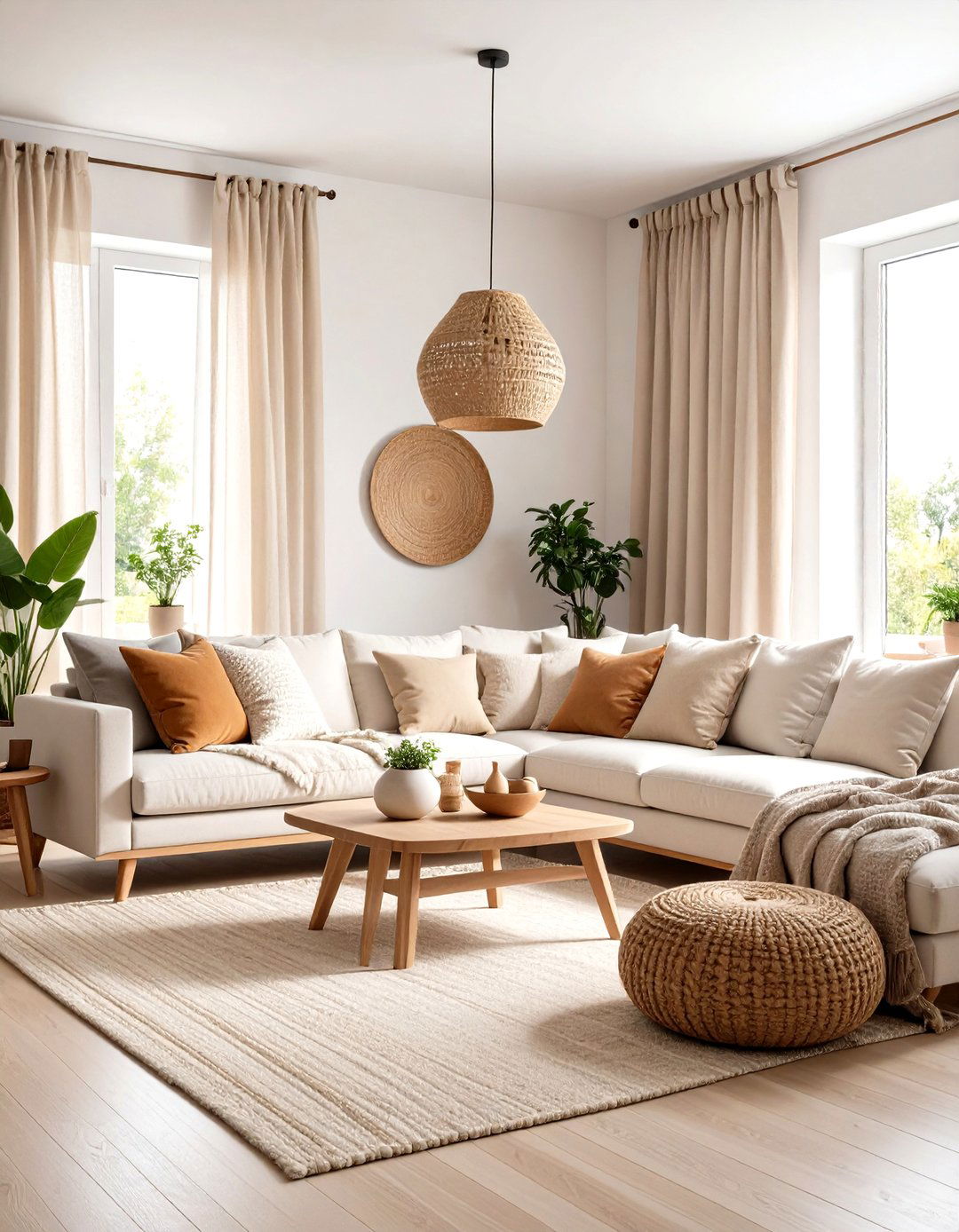
A cozy, neutral envelope makes every other element sing in an organic modern living room. Start with creamy whites, soft taupe, or warm grey — Better Homes & Gardens notes these shades anchor the style while letting textures shine. Add depth through tonal variation: a chalky lime-wash on walls, oatmeal hemp draperies, and pale oak baseboards. Homes & Gardens stresses that layered neutrals feel timeless yet current when mixed with organic shapes. Finish by echoing hues in pillows and ceramics so even small accents support the room’s cohesive, calming rhythm.
2. Sculptural Wood Coffee Tables as Natural Centerpieces
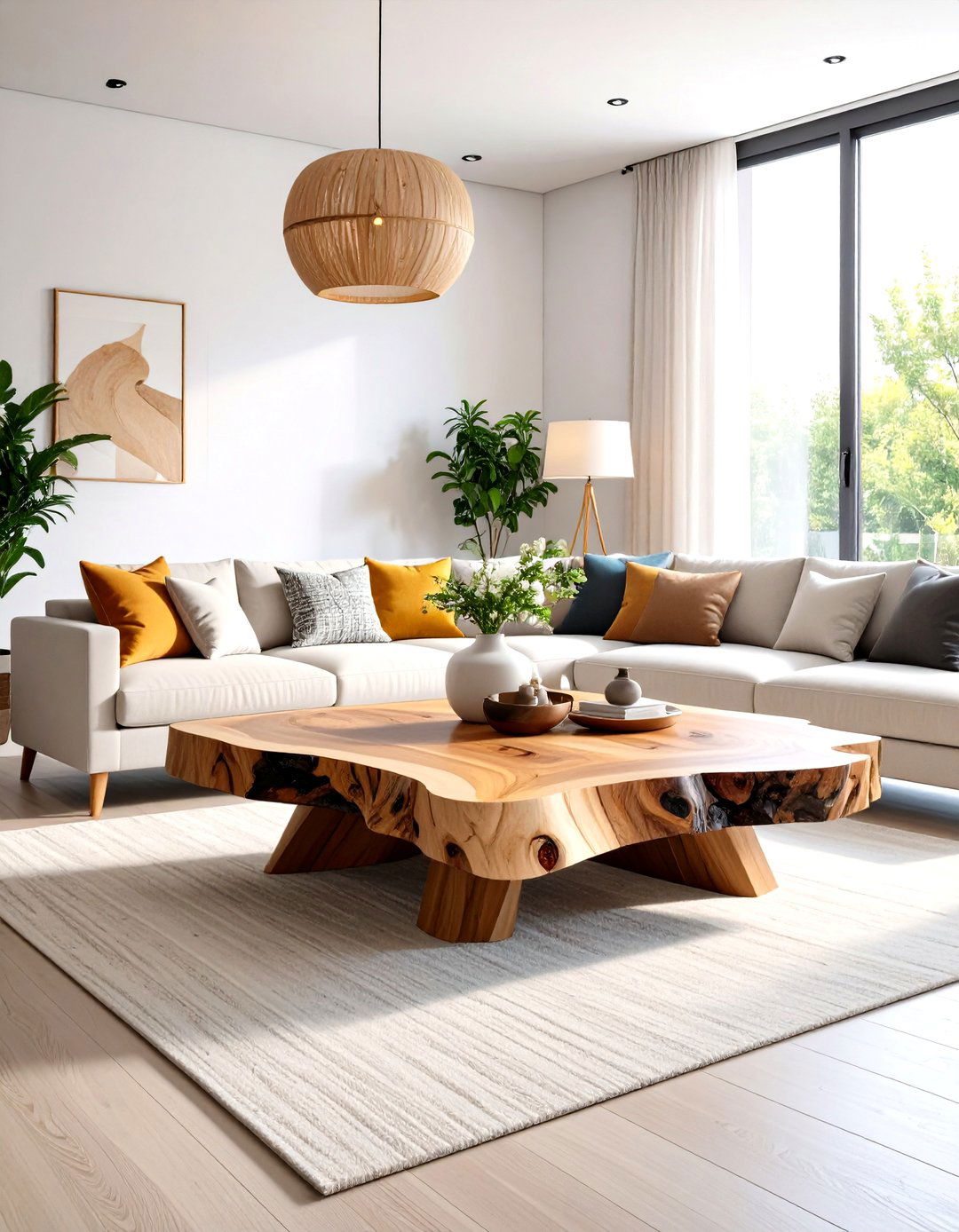
The right coffee table can double as art. Architectural Digest features oak or walnut slabs left deliberately knotty for a one-of-a-kind focal point. Choose a live-edge piece or softly rounded block legs to introduce tactile interest without visual clutter. Designers at Dwell highlight that low, hefty silhouettes ground modern seating arrangements while celebrating grain patterns. Keep finishes matte or oil-rubbed to preserve the wood’s authenticity; the resulting centerpiece draws guests in and underscores the room’s connection to the forest it honors.
3. Layer Jute-and-Wool Rugs for Underfoot Serenity
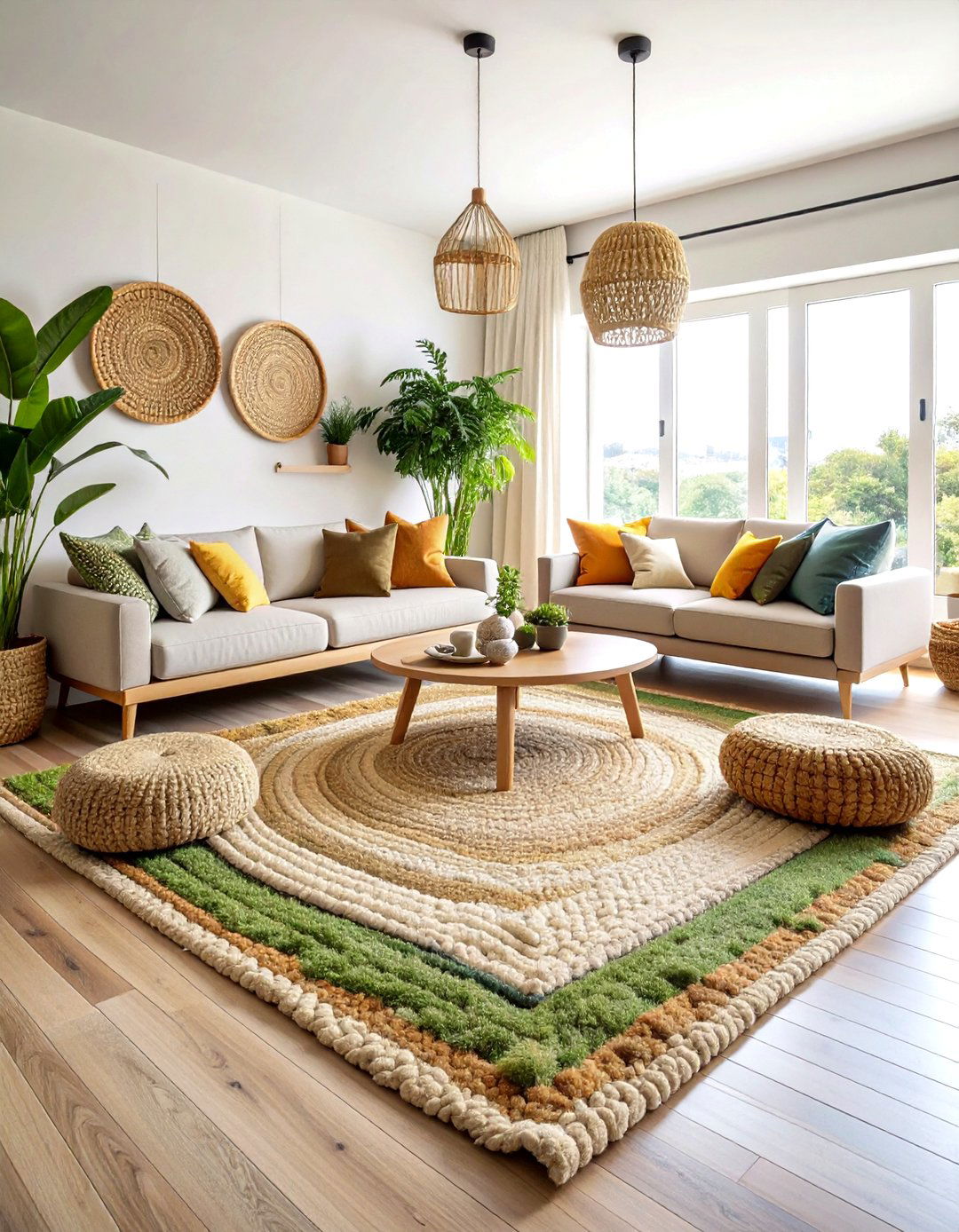
Organic modern living rooms rely on layers, and rugs are the fastest way to add both warmth and acoustic softness. Serena & Lily calls natural-fiber floor coverings “nature’s texture, ” recommending flat-weave jute or wool-jute blends for durability and depth. Stack a chunky sisal under a plusher hand-tufted wool to create a subtle tonal shift and cushioning. Better Homes & Gardens adds that earthy rugs act as neutral canvases, letting furnishings float while defining conversation zones.
4. Invite the Forest Indoors with Mature Greenery
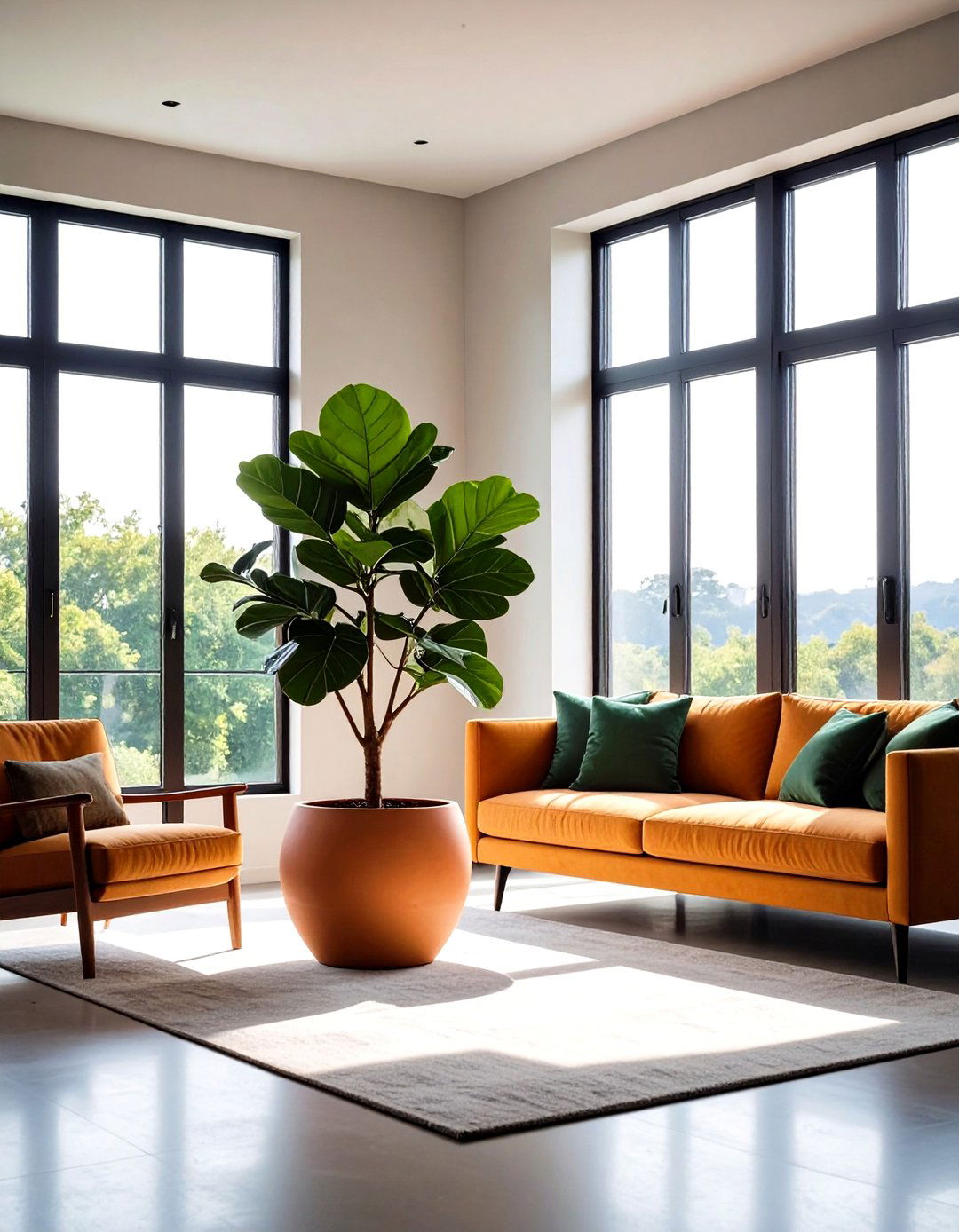
Few upgrades change a living room more dramatically than a statement tree. Decorilla’s 2025 trend report spotlights oversized olive or fiddle-leaf figs as biophilic anchors that purify air and calm the mind. Plant them in sculptural clay planters to echo the room’s natural palette. Homes & Gardens confirms that Kris Jenner’s own organic modern living room uses greenery to soften stark white walls and tie textures together. Position plants where they receive gentle, indirect light and watch the space come alive.
5. Hand-Thrown Ceramic Pendants for Sculptural Lighting
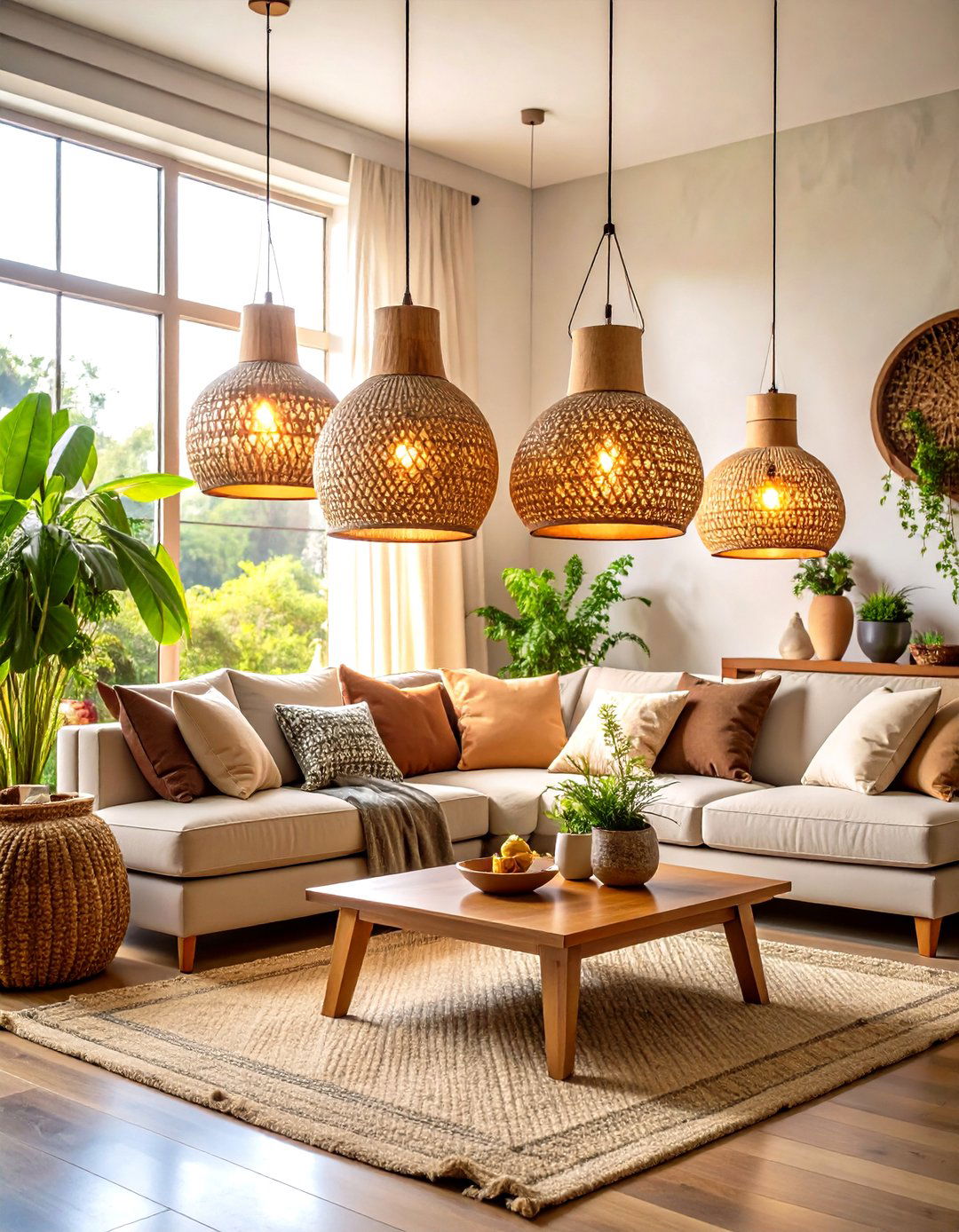
Organic modern spaces glow through crafted, not glossy, lighting. Architectural Digest advises swapping mass-produced fixtures for hand-thrown clay pendants or terracotta sconces, whose subtle irregularities add soul. House Beautiful notes that organic silhouettes — bell-shaped shades or asymmetrical clusters — cast warm, diffuse light that flatters neutral palettes. Suspend pendants low over a coffee table or in a reading nook to create intimate pools of light and an artisanal focal point.
6. Lime-Wash or Clay Paint for Living Room Walls
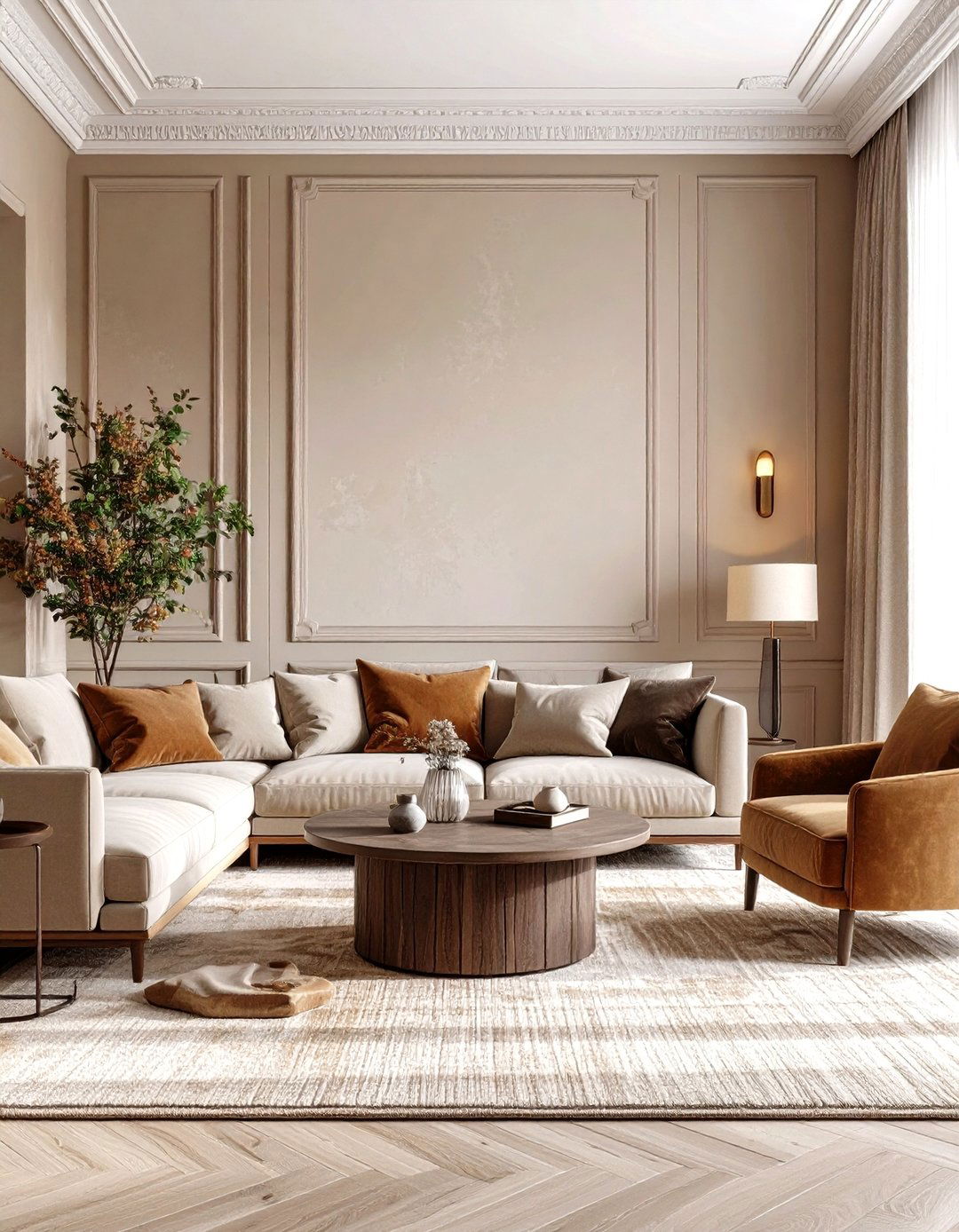
Forget high-sheen paint; a mineral finish adds gentle movement without pattern overload. Homes & Gardens highlights lime-wash as a hallmark of modern organic interiors because its cloud-like texture references stone and plaster. The Good Trade adds that clay-based paints are VOC-free, breathable, and available in nuanced earth tones. Apply with sweeping brush strokes to let colour variations emerge, then leave trim crisp for a modern contrast.
7. Monolithic Stone or Concrete Fireplaces with Floating Hearths
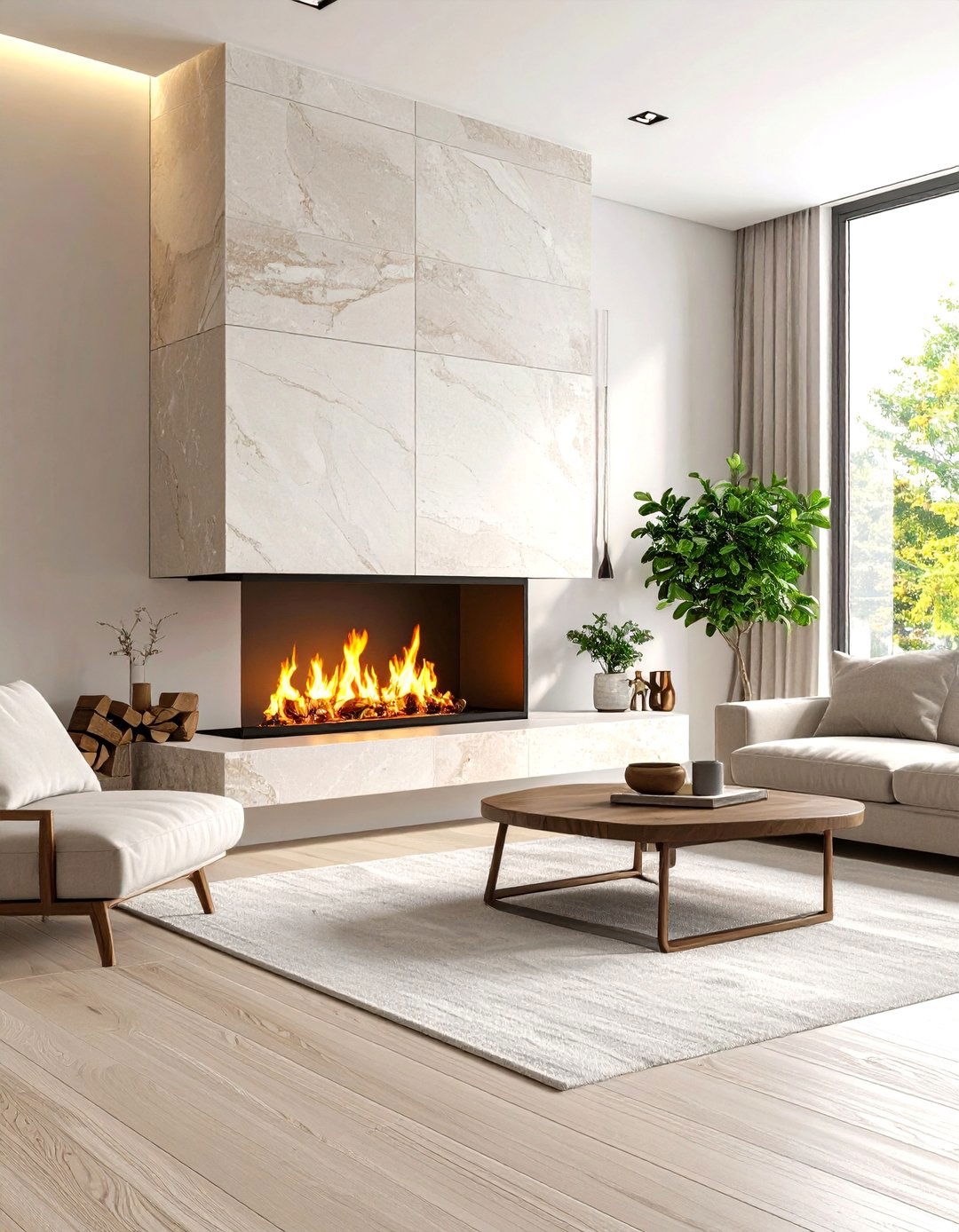
Architectural Digest’s Monterey remodel shows how a single slab fireplace can become a sculptural anchor that bridges mid-century and organic modern aesthetics. Opt for honed limestone, soapstone, or a cast-in-place concrete surround; their quiet veining complements neutral walls. Dwell editors favor extending the hearth into a bench, offering extra seating while emphasizing horizontal lines. Keep mantels minimal so materiality takes center stage.
8. Low-Profile Bouclé Modular Sofas Encourage Relaxed Conversation
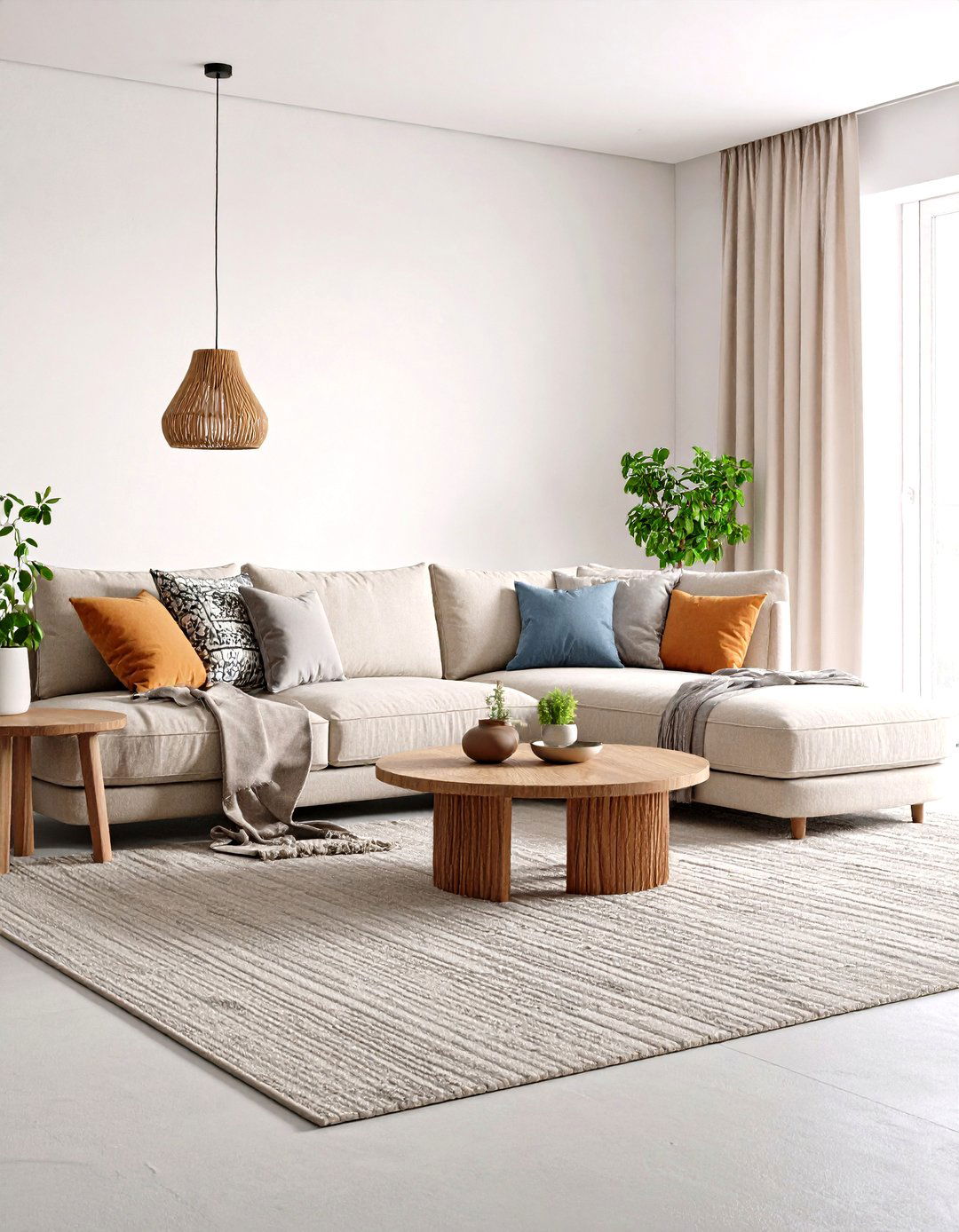
House Beautiful predicts that curved, organic sofas will dominate living rooms in 2025, favouring bouclé for its cozy texture. Choose a sectional with adjustable ottomans so you can reconfigure seating when guests arrive. Healthier Homes recommends nontoxic, solid-wood frames and natural latex cushions to keep indoor air pristine. Anchor the sofa with a plush throw and stoneware side tables, echoing the room’s commitment to touchable surfaces.
9. Picture Windows Framed with Billowing Linen
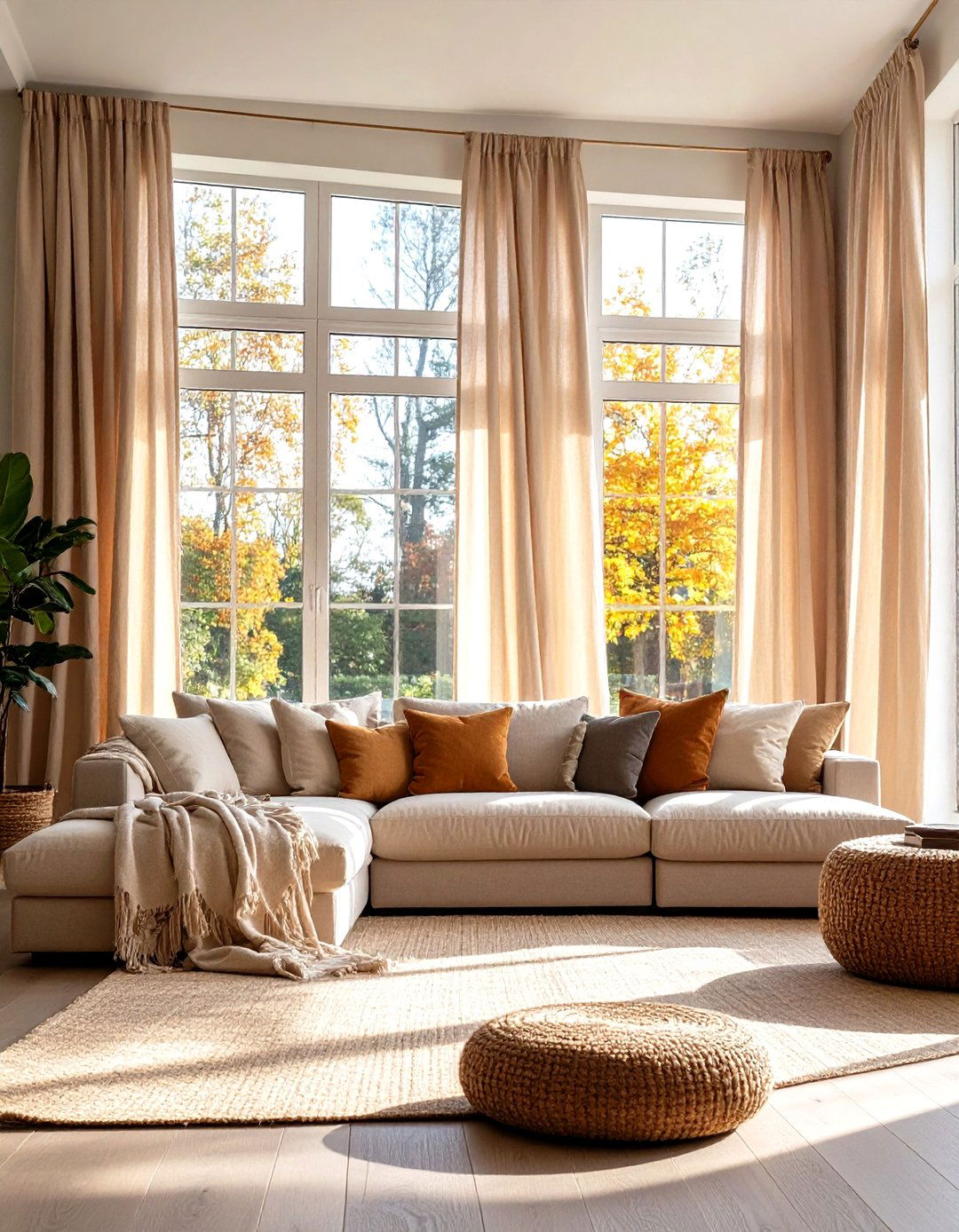
Large panes of glass erase barriers between living room and landscape, a top priority in organic design according to Architectural Digest’s Pacific Palisades tour. Frame those views with floor-to-ceiling linen drapes that filter glare while adding gentle movement. Homes & Gardens stresses that natural fibres breathe better than synthetics and mellow over time, enriching the palette. Hang them on minimalist black rods for a clean yet earthy finish.
10. Reclaimed Wood Ceiling Beams for Quiet Drama
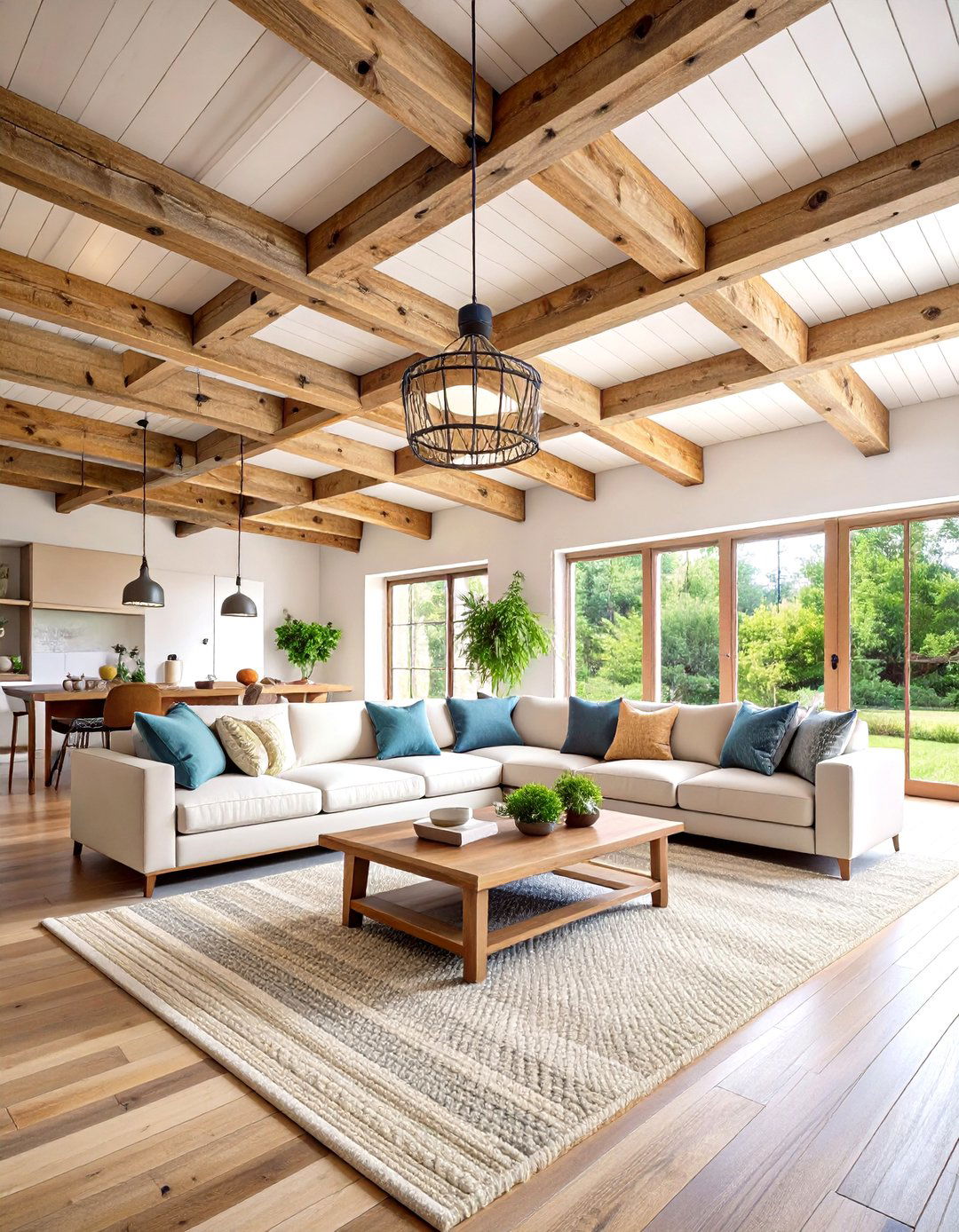
Exposed beams instantly infuse character. Homes & Gardens notes designers are installing reclaimed lumber — even in new builds — to bring warmth overhead and subtly reference farmhouse origins. Sand lightly but leave saw marks for authenticity. Dwell’s loft projects demonstrate how contrast emerges when weathered beams meet crisp white ceilings, balancing rustic and modern vibes.
11. Earth-Toned Metal Accents Temper the Palette
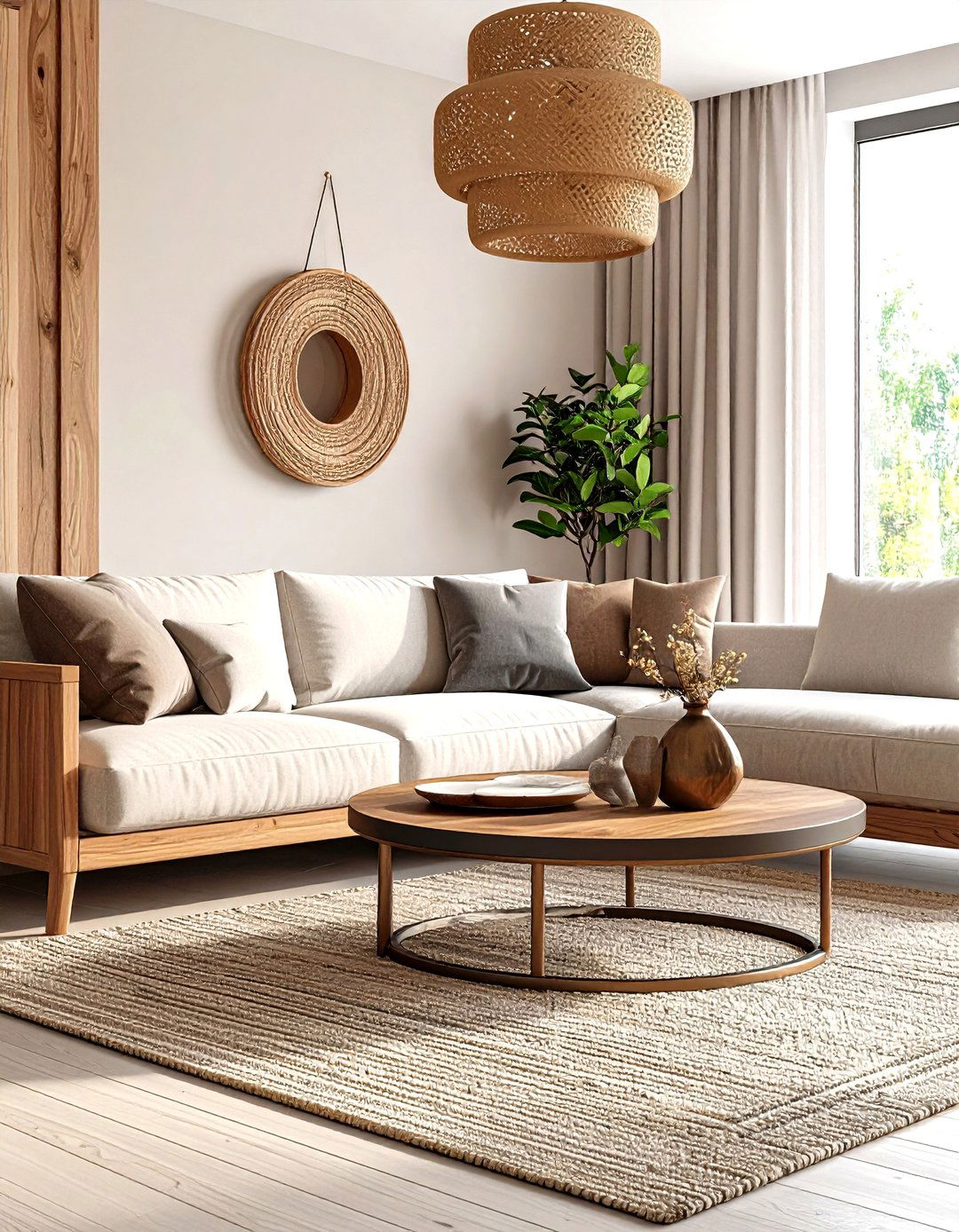
Organic modern design isn’t anti-metal — it’s pro nuance. House Beautiful reports that bronzed brass, blackened steel, and copper patina add depth without the glare of polished chrome. Use slim metal frames on coffee tables or as discrete inlay on cabinetry. The Serene Edge project on Dwell shows how muted metals quietly echo wood knots and stone veining.
12. Built-In Niches Display Raw Artifacts
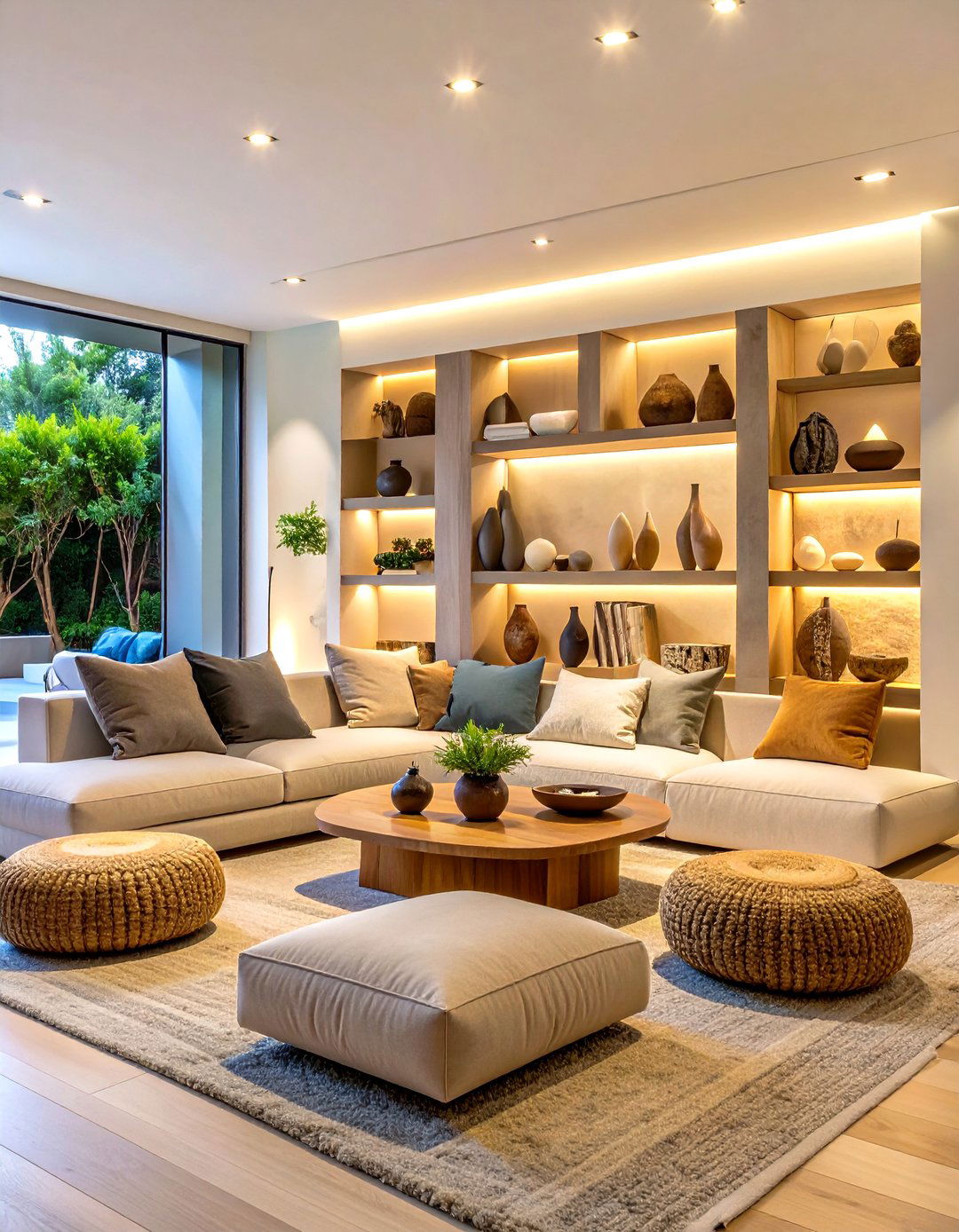
Minimal ornament keeps focus on texture, but curated objects add story. Dwell’s photo galleries showcase plastered niches housing river stones, handmade vessels, and sand-cast sculptures. Homes & Gardens suggests color-coding objects to the wall for tonal harmony, letting shape and material speak. Integrated LEDs can graze the shelves, highlighting each artifact’s surface.
13. Rounded-Edge Furniture Softens Modern Geometry
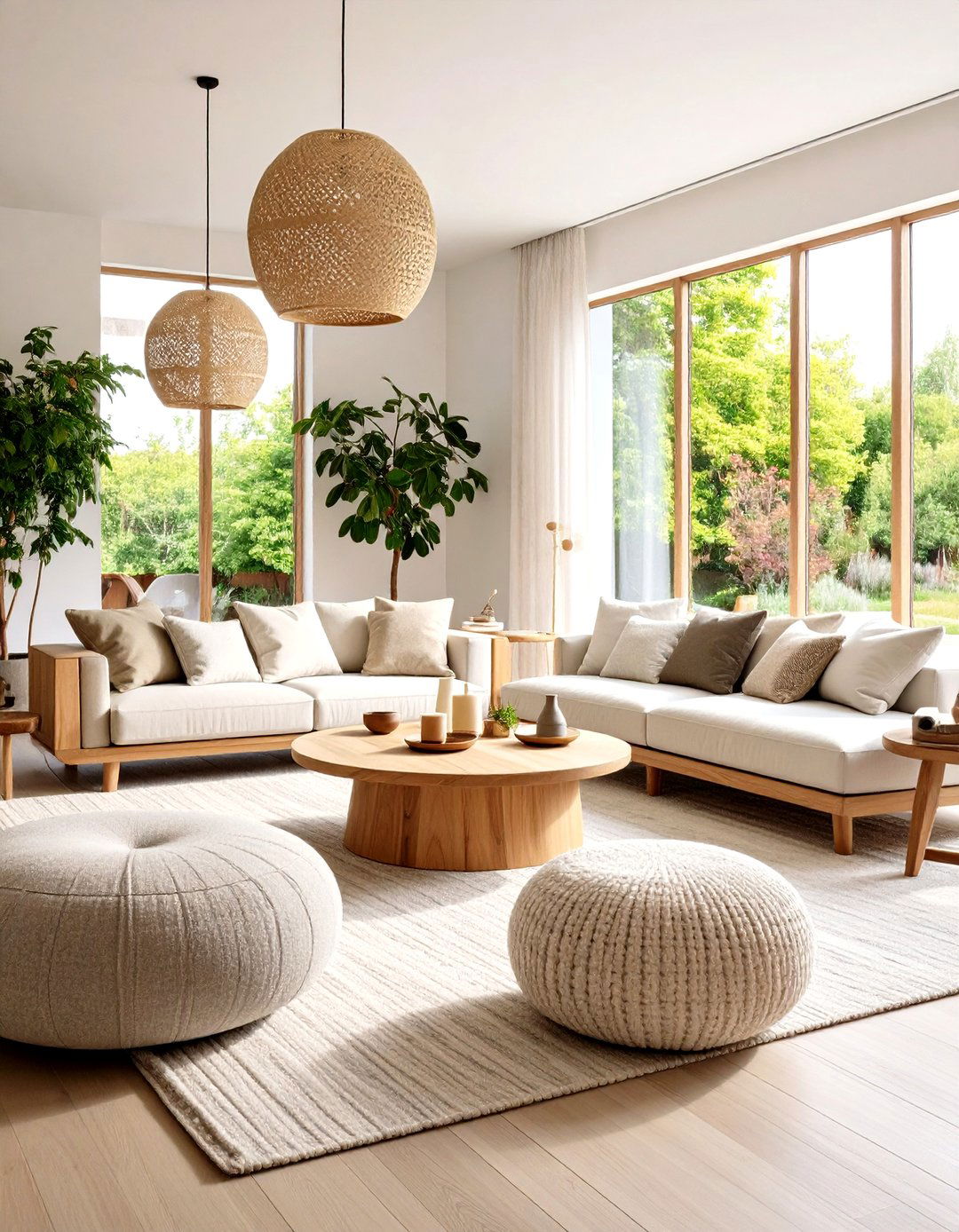
Contrasting sharp architecture with gentle curves is central to Zillow’s “organic modernism” findings, which link pebble-shaped furnishings to higher resale prices. Swap boxy side tables for drum stools or oval consoles. Architectural Digest points out that these forms invite circulation and keep traffic lines fluid. Upholster in cotton-linen blends to keep silhouettes approachable.
14. Tone-on-Tone Layers Create Depth without Clutter
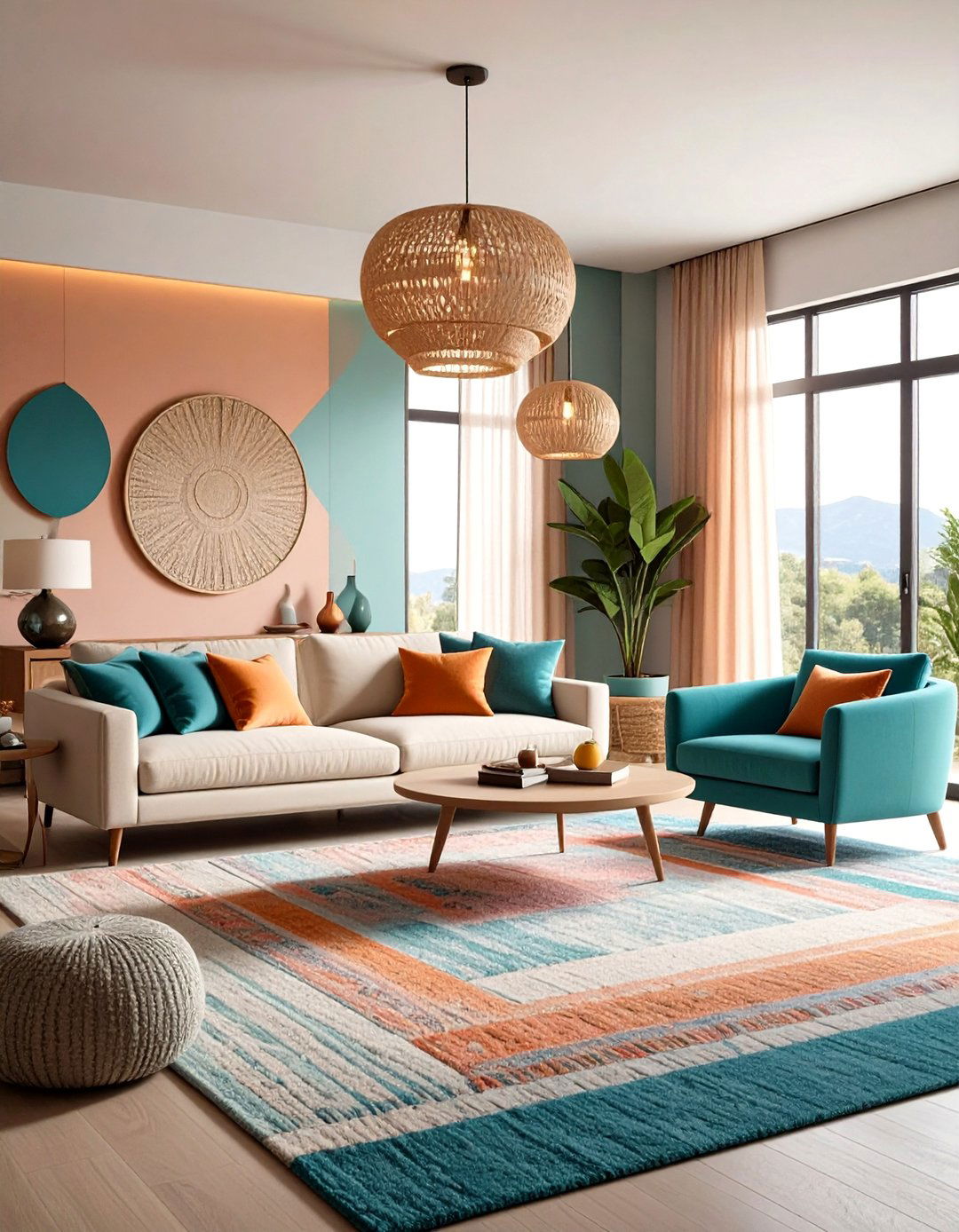
Homes & Gardens describes monochromatic schemes as calming when executed with texture rather than colour contrast. Employ boucle, slubbed silk, nubby wool, and ribbed ceramics all in similar shades. Better Homes & Gardens underscores that subtle texture shifts prevent a neutral room from falling flat, proving that quiet luxury doesn’t mean boring.
15. Floating Wood Media Consoles Keep Floor Space Airy
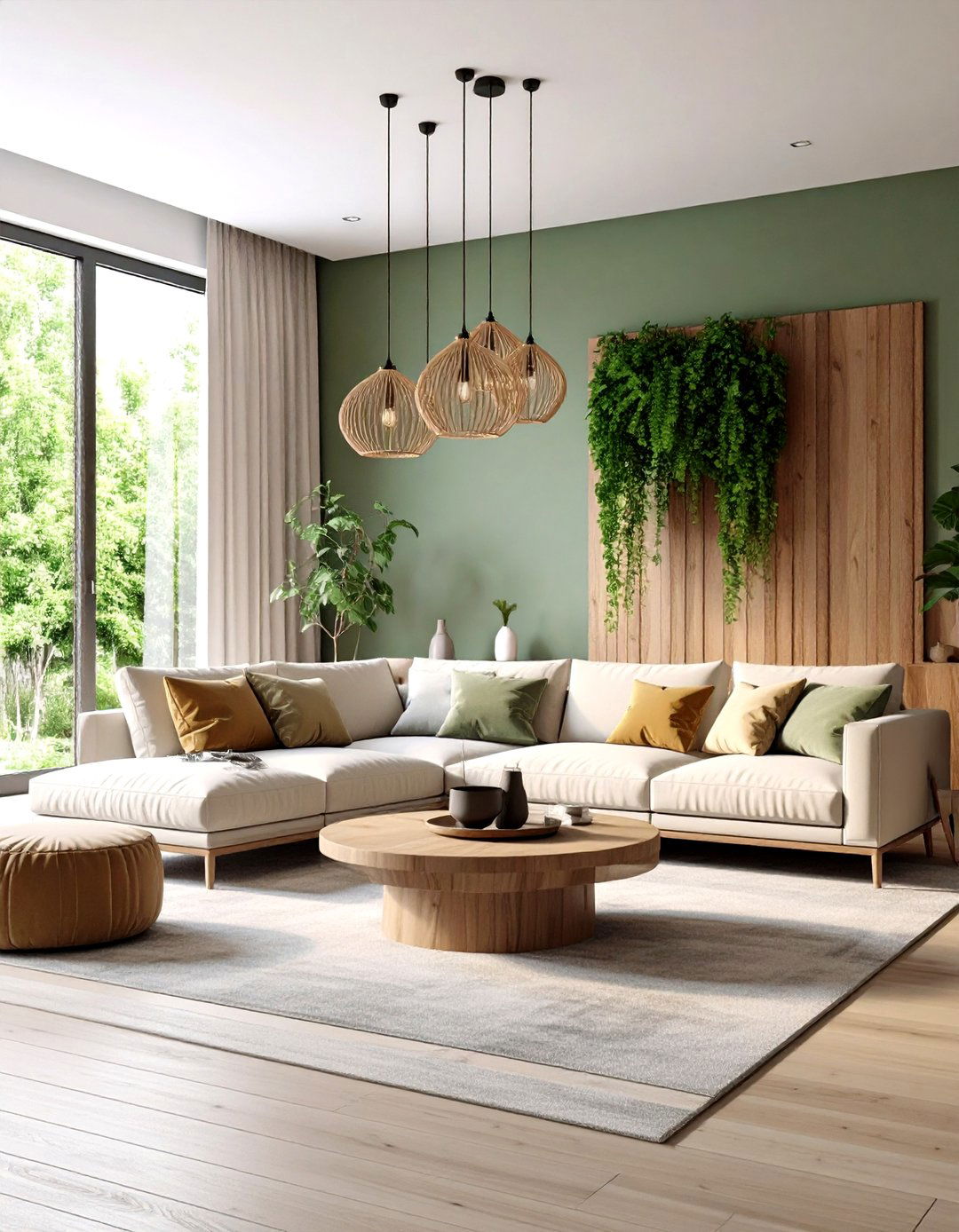
A wall-mounted console crafted from rift-sawn oak frees up visual real estate and allows rugs to breathe. Architectural Digest showcases floating furniture as a favorite trick in city apartments where every inch counts. Healthier Homes adds that solid hardwood cabinetry avoids off-gassing common with MDF veneers. Cable-management cutouts keep tech discreet.
16. Choose FSC-Certified, Nontoxic Furnishings
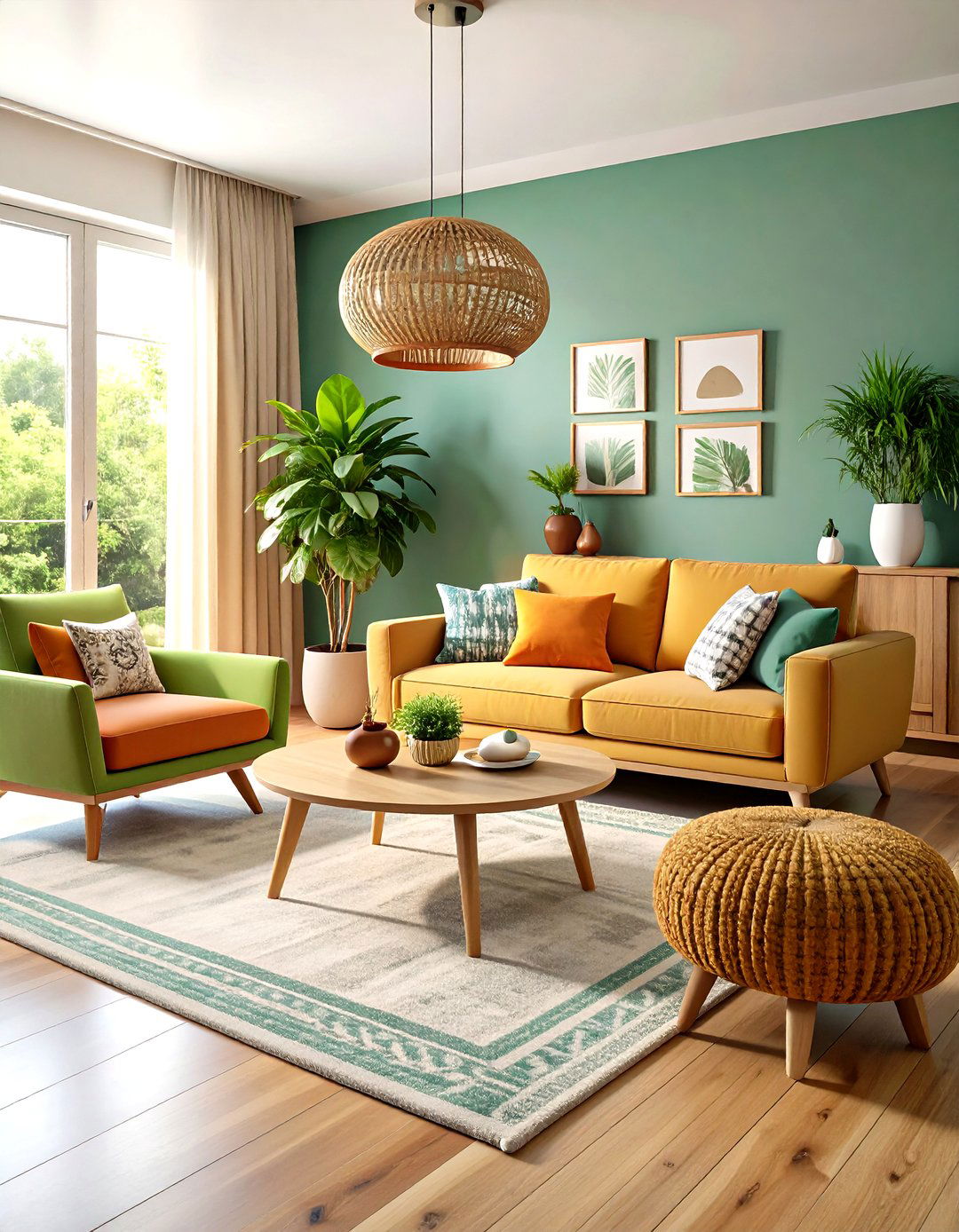
Sustainability is style’s backbone. The Good Trade lists brands offering FSC wood, water-based finishes, and zero-VOC adhesives for conscious living room pieces. Homes & Gardens confirms the modern organic look remains on-trend precisely because of its eco-credibility, making such investments future-proof. Certification labels on sofas, tables, and rugs safeguard both planet and indoor air.
17. Rattan and Cane Accent Chairs Offer Breezy Contrast
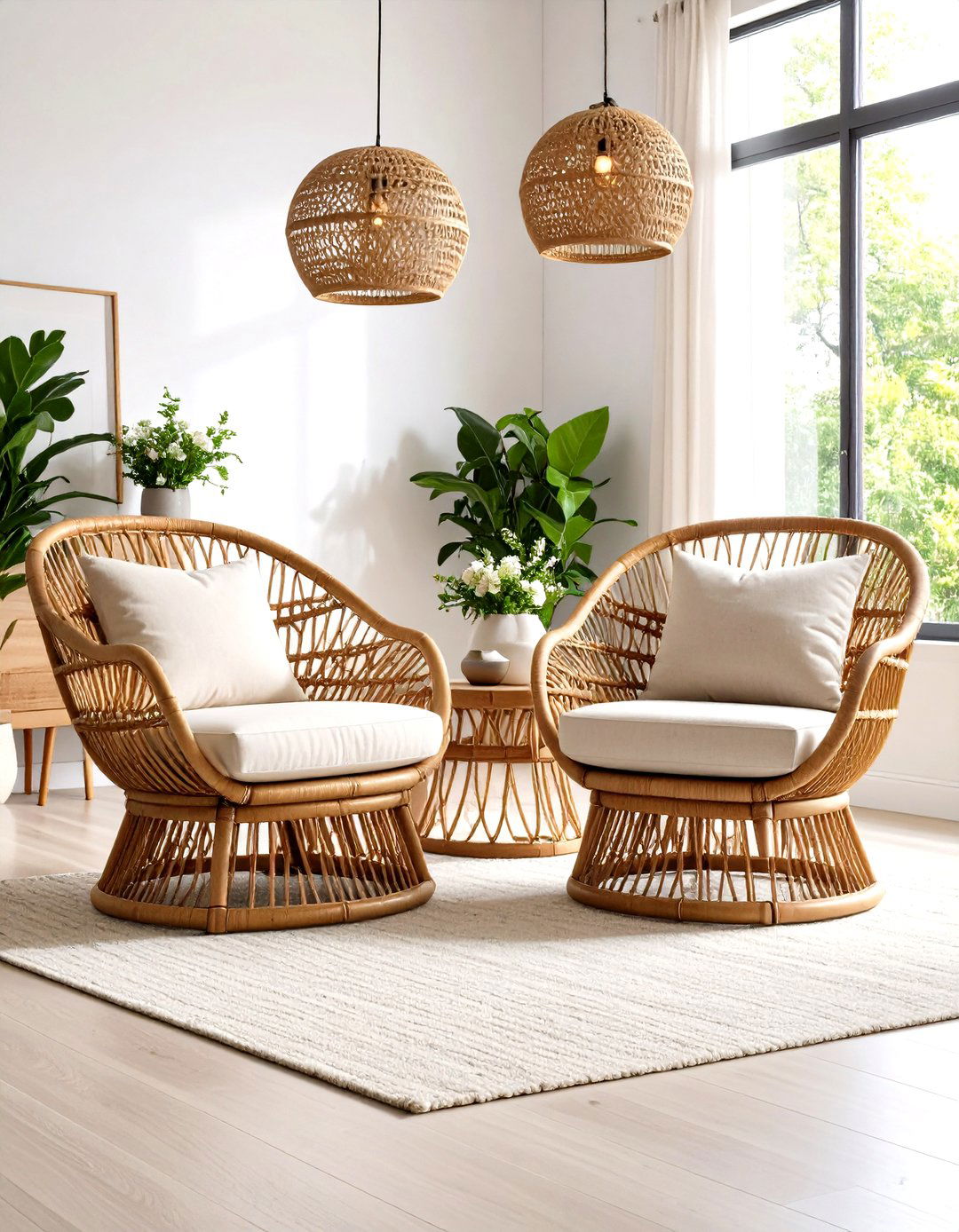
Lightweight woven seats break up heavier upholstery. Architectural Digest’s biophilic roundup praises rattan for being renewable and texturally rich. Serena & Lily adds that cane’s open weave allows light and air to flow, perfect for humid climates. Keep cushions neutral so the weave’s natural variation shines.
18. Earth-Pigment Art Grounds the Palette
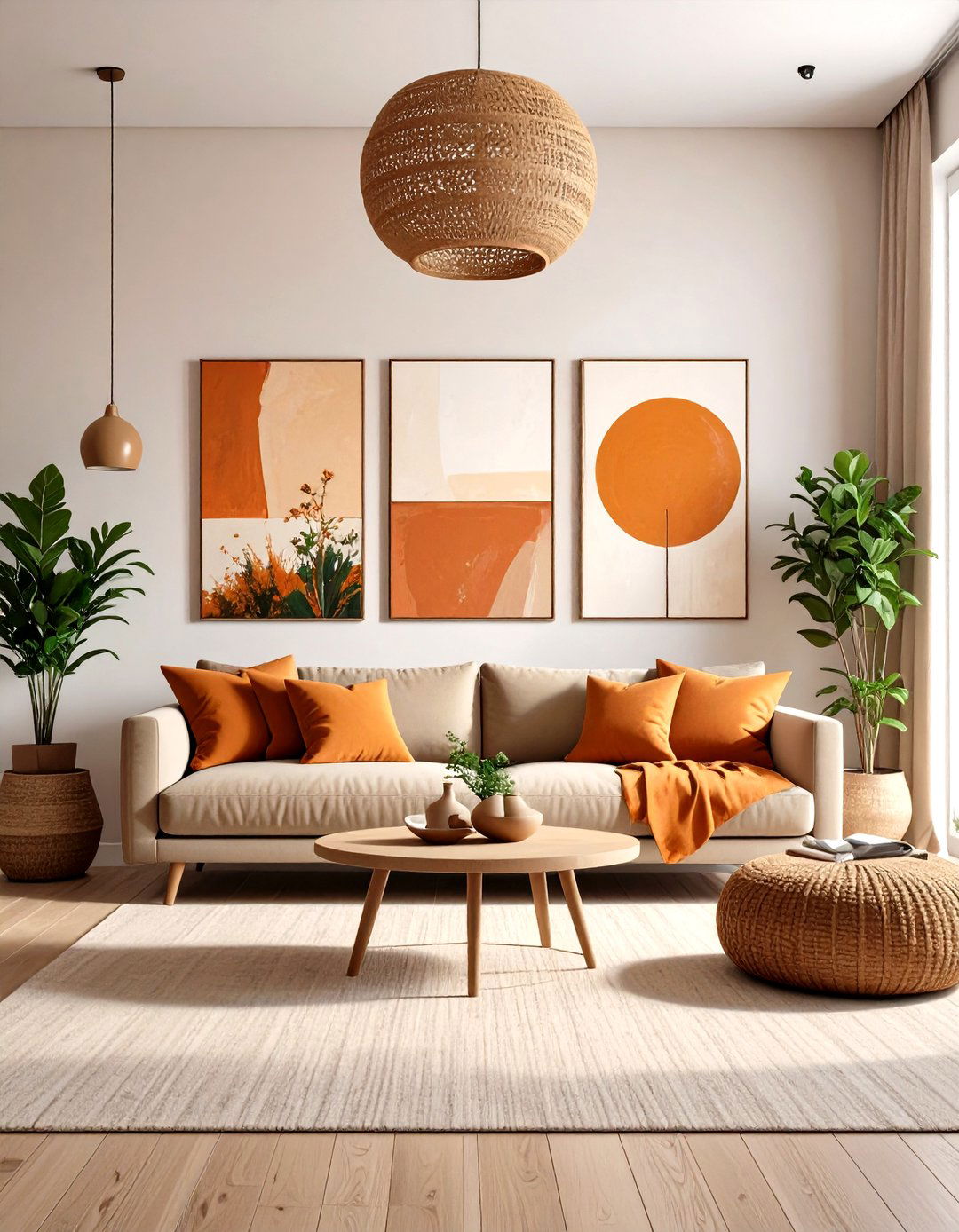
Swap loud prints for oversized canvases washed in ochre, clay, and umber. Better Homes & Gardens showcases nature-inspired palettes that echo soil and sky, fostering harmony. Homes & Gardens reminds readers that artwork ties together scattered accents, acting as a visual anchor above a sofa or fireplace.
19. Natural Fiber Shades Regulate Light Gracefully
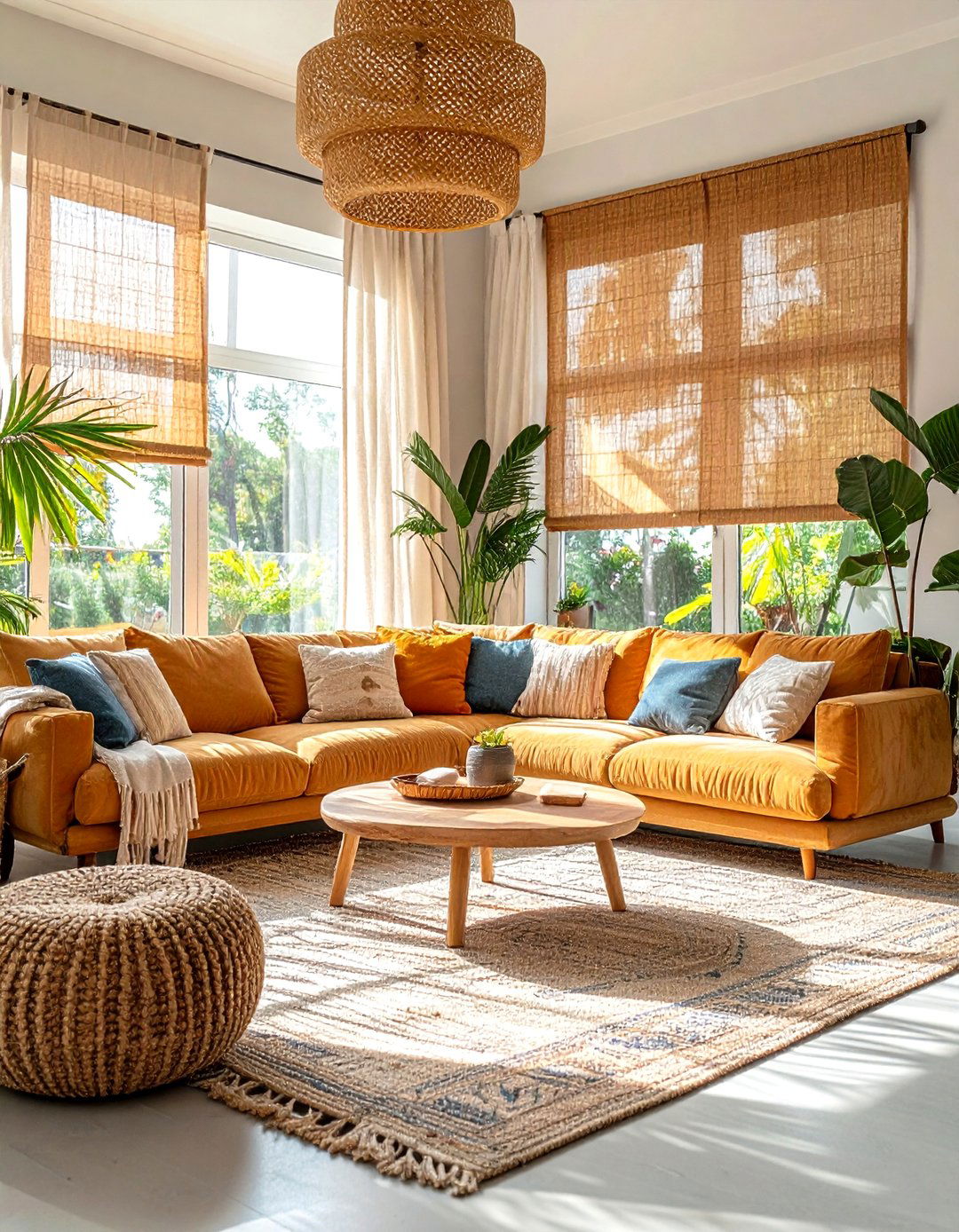
Roman shades in woven grasses or bamboo lend texture while filtering glare. Anthony Michael Interior Design notes bamboo’s fast-growth sustainability and calming hue variation. Paired with sheer linen drapes, they create a light-control duo that feels handcrafted, not high-tech.
20. Seamless Indoor-Outdoor Flow via Sliding Glass Walls

Large pocket doors that disappear into walls blur boundaries, echoing Frank Lloyd Wright’s organic architecture ideals. Architectural Digest’s Monterey project illustrates how terraces off every living room amplify square footage without building new walls. Frame openings in slim black metal to keep sightlines clean.
21. Vintage Mid-Century Accents Add Provenance
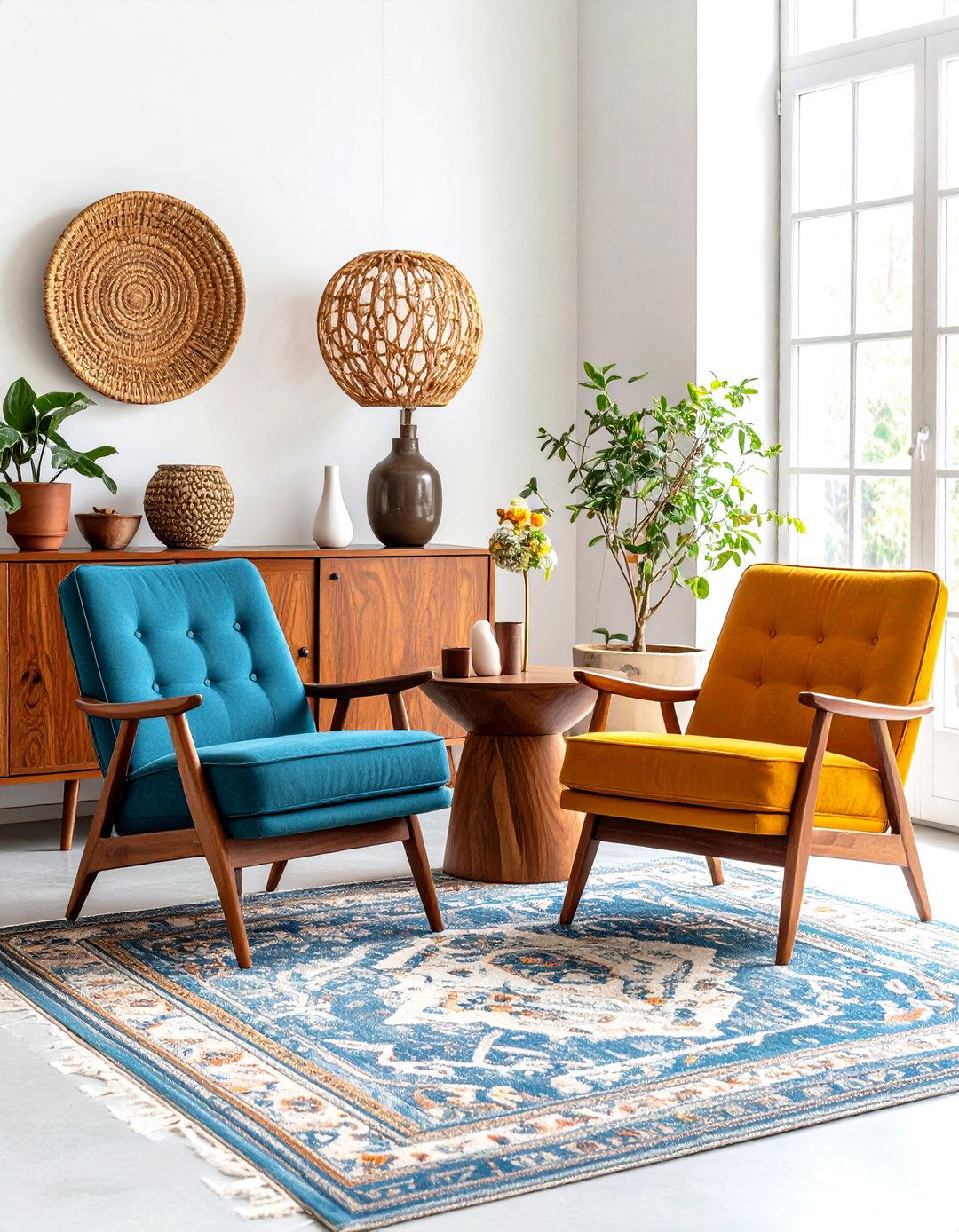
Scouring markets for Danish teak armchairs or Noguchi tables injects history and keeps new purchases minimal. Dwell highlights vintage curation as a sustainability hack that layers patina over pristine finishes. House Beautiful notes organic silhouettes from the 1950s feel prescient again, making them easy conversation starters.
22. Pebble-Shaped Poufs Provide Flexible Seating
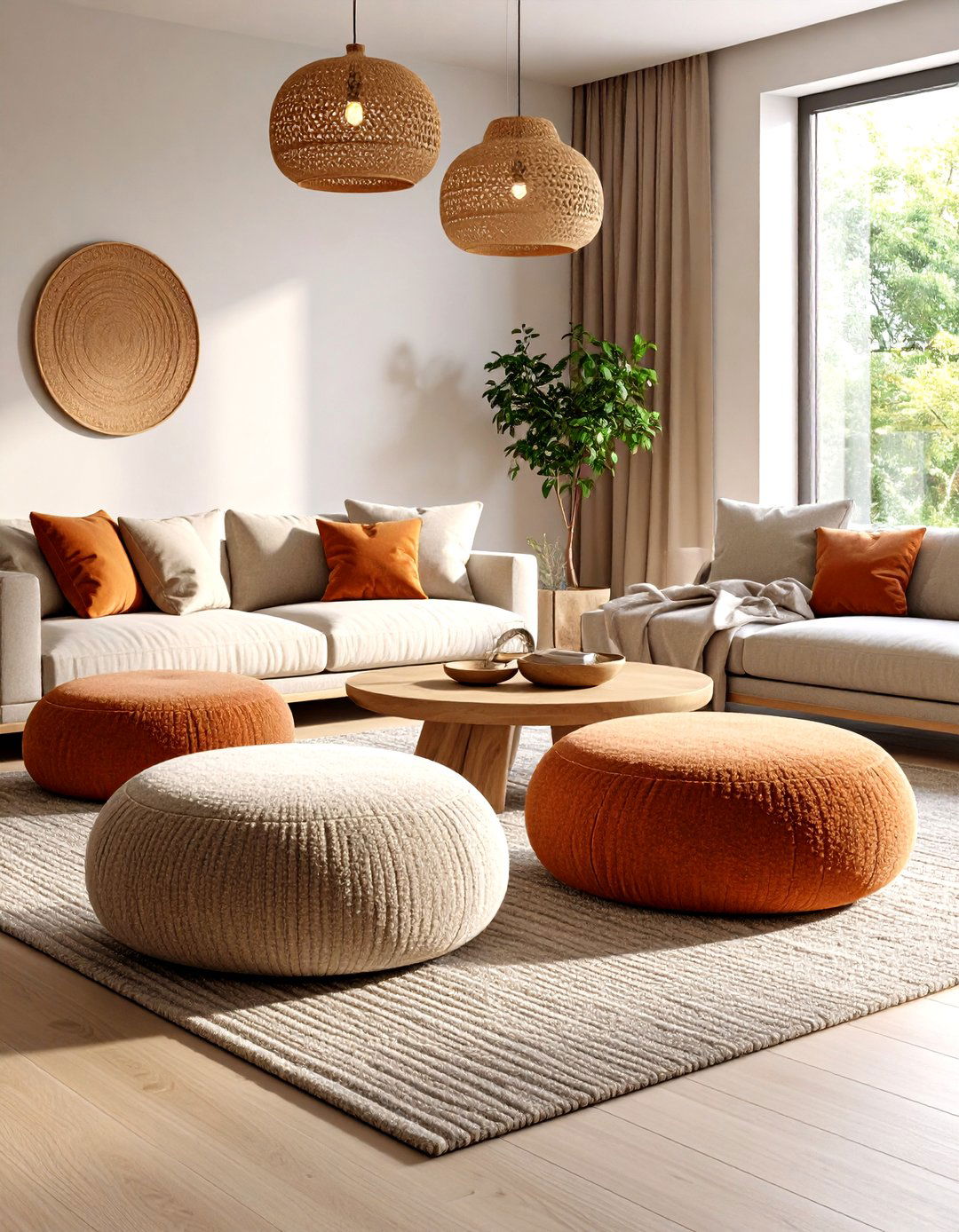
Moveable, low seating lets guests cluster wherever the energy flows. Zillow’s data links rounded ottomans to higher buyer appeal in living rooms, underscoring their commercial and aesthetic value. Choose wool-felt upholstery in sand or terracotta so pieces read as polished stones sprinkled across the floor.
23. Latticed Wood Screens for Sculptural Division
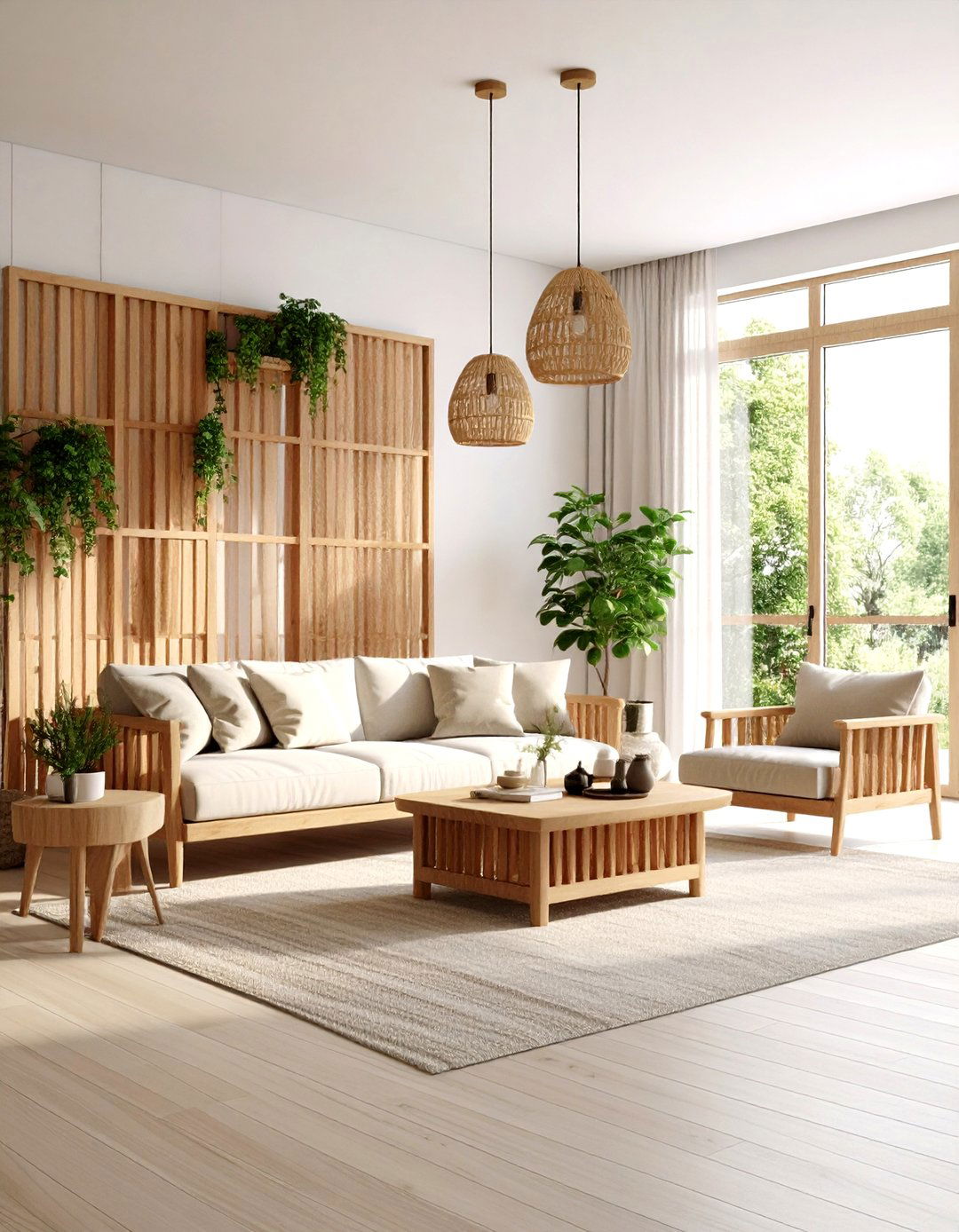
Open-work partitions carve out a workspace or reading nook without blocking light. Homes & Gardens lists slatted oak screens among 2025’s favorite natural accents for living rooms. Finish with natural oil to highlight grain and allow subtle fragrance to linger.
24. Dimmable, Full-Spectrum LEDs Elevate Evening Ambience
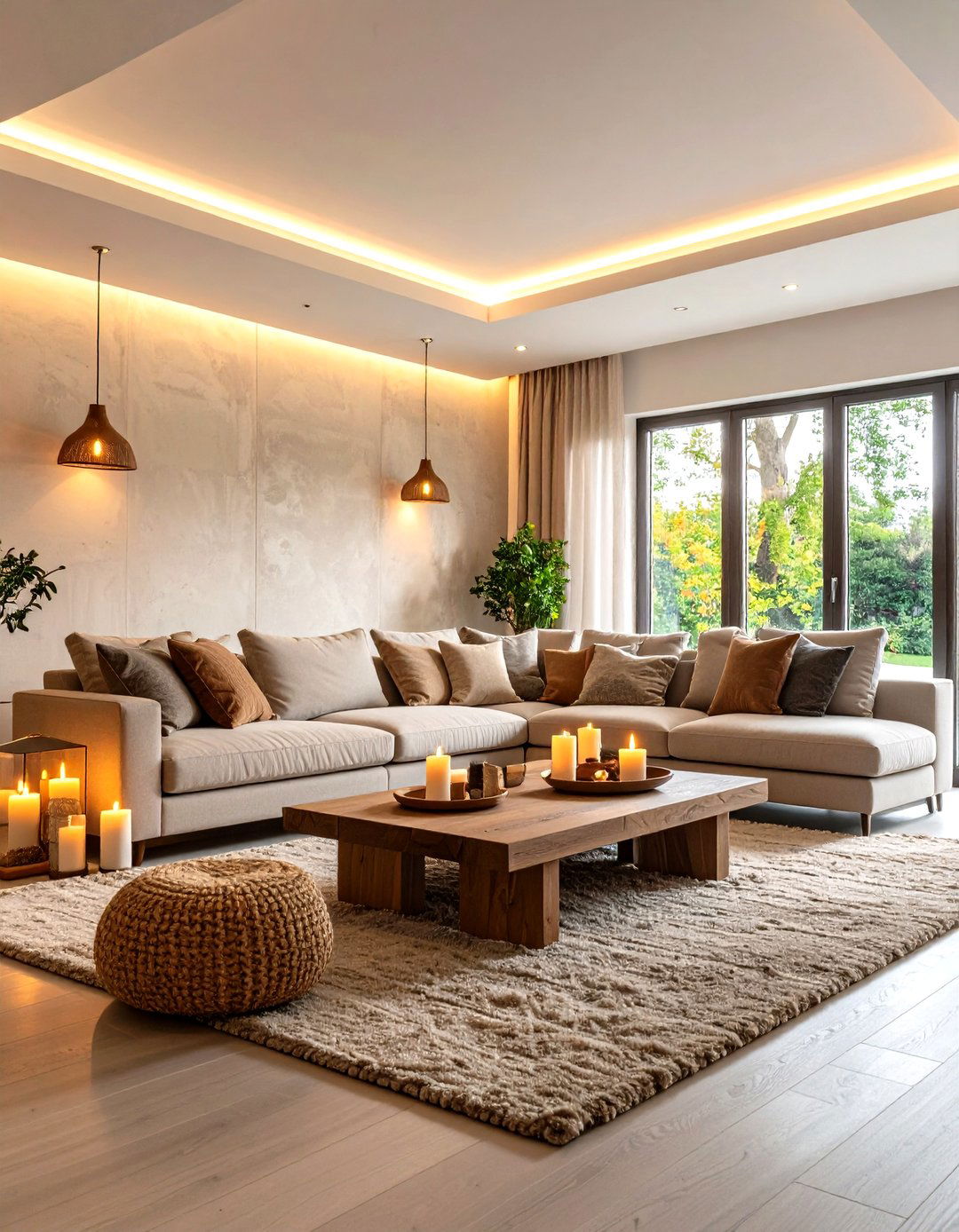
Modern fixtures should mimic daylight’s warmth when dimmed. Decorilla designers recommend full-spectrum LEDs integrated into ceiling coves to wash walls and accentuate lime-wash texture. Pair with candles in stone holders for layered luminosity that never feels clinical.
25. Wool Draperies Double as Acoustic Panels
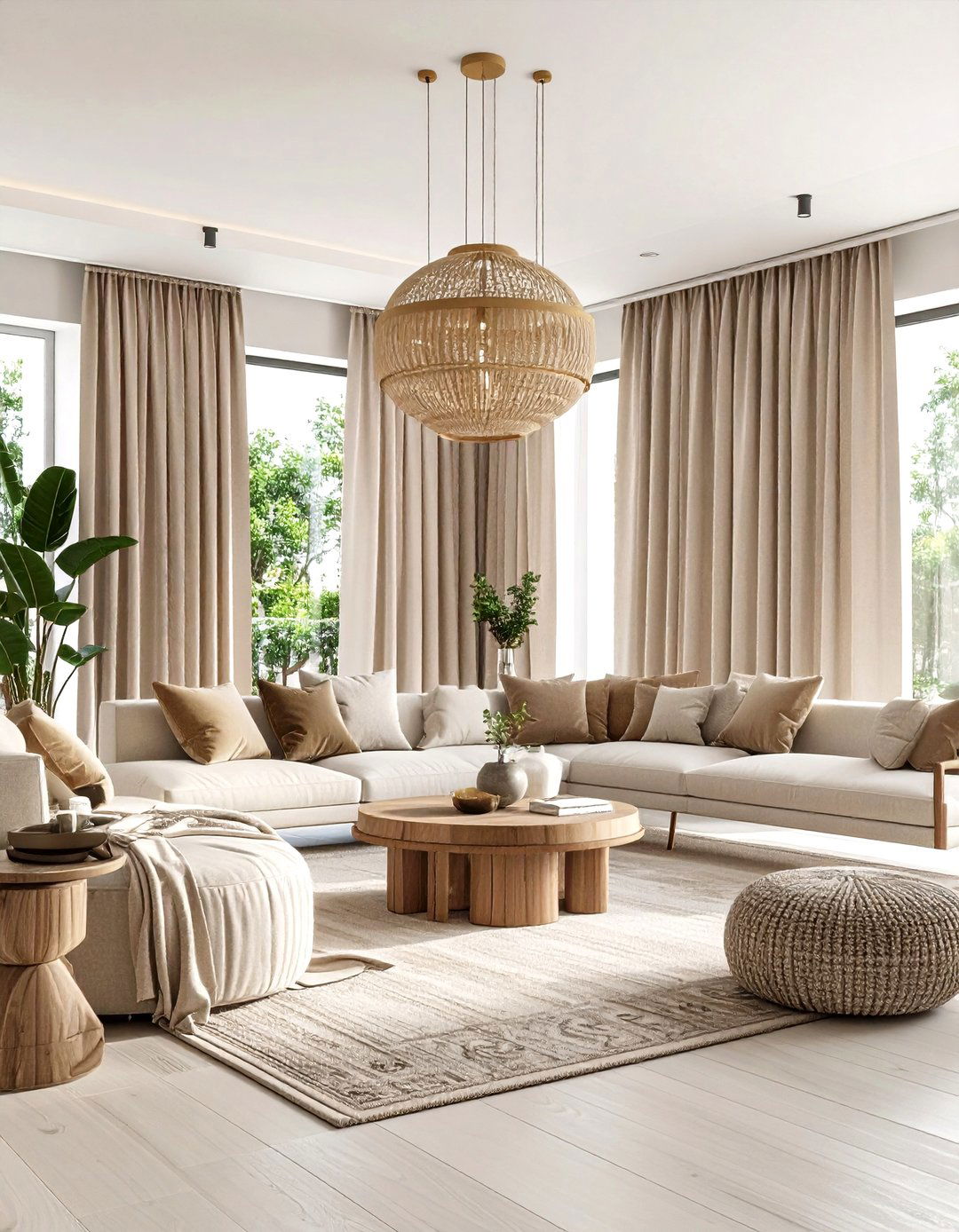
Open-plan living rooms can echo; dense textiles absorb sound. Better Homes & Gardens advises wool-blend curtains lined with cotton flannel to soften edges and insulate against heat loss. Mount them from ceiling tracks so fabric pools slightly, reinforcing organic modernism’s relaxed elegance.
Conclusion:
Organic modern living room design thrives on the marriage of nature and nuance, where sustainable materials, sculptural silhouettes, and biophilic elements weave a serene, future-proof retreat. Neutral palettes layered with texture keep the look timeless, while reclaimed wood, stone, and nontoxic finishes safeguard both planet and wellbeing. From lime-wash walls to rounded poufs, every idea here invites you to soften hard edges, honor craftsmanship, and let the outdoors quietly inform indoor life — ensuring your living room feels as grounded and vibrant tomorrow as it does today.


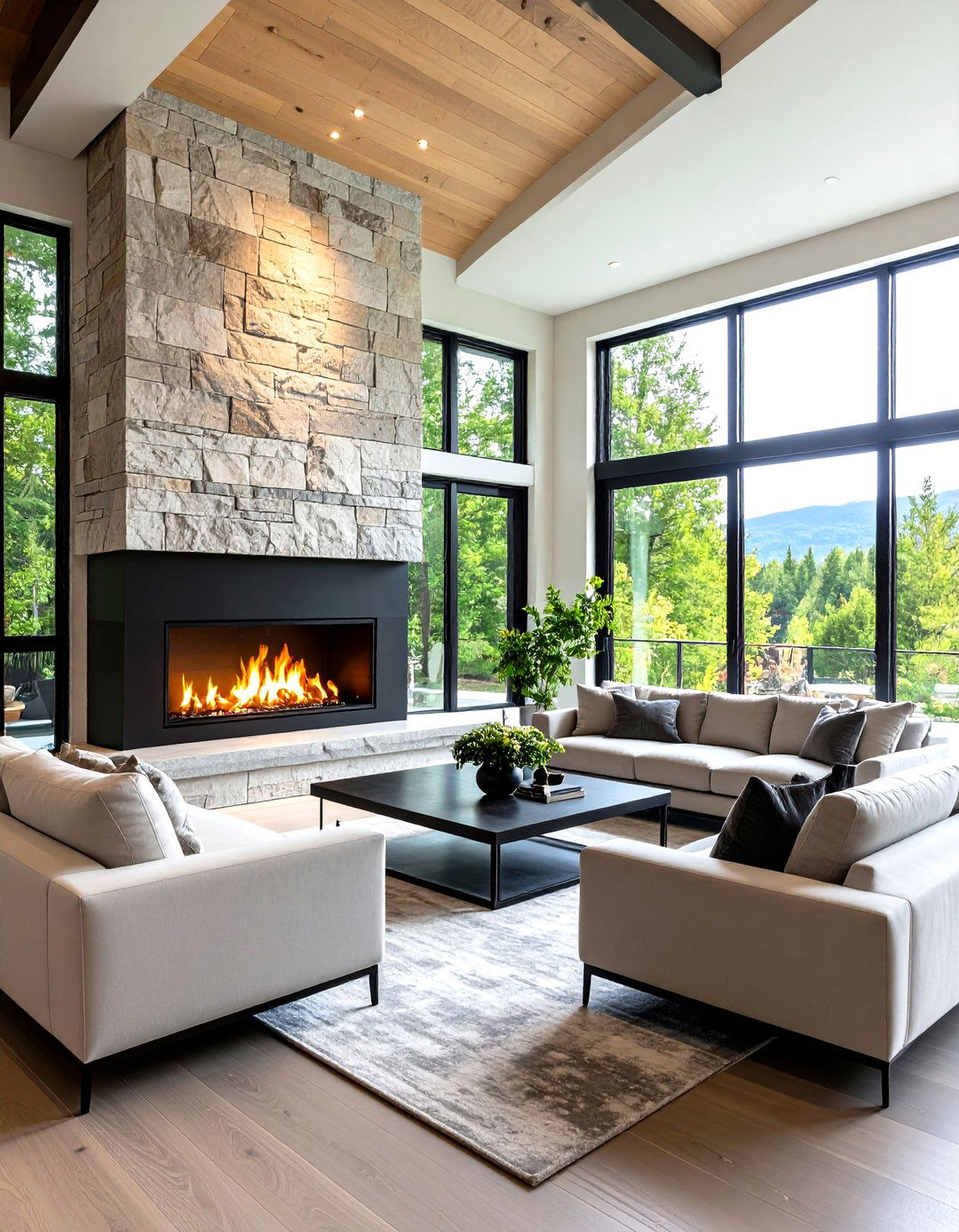
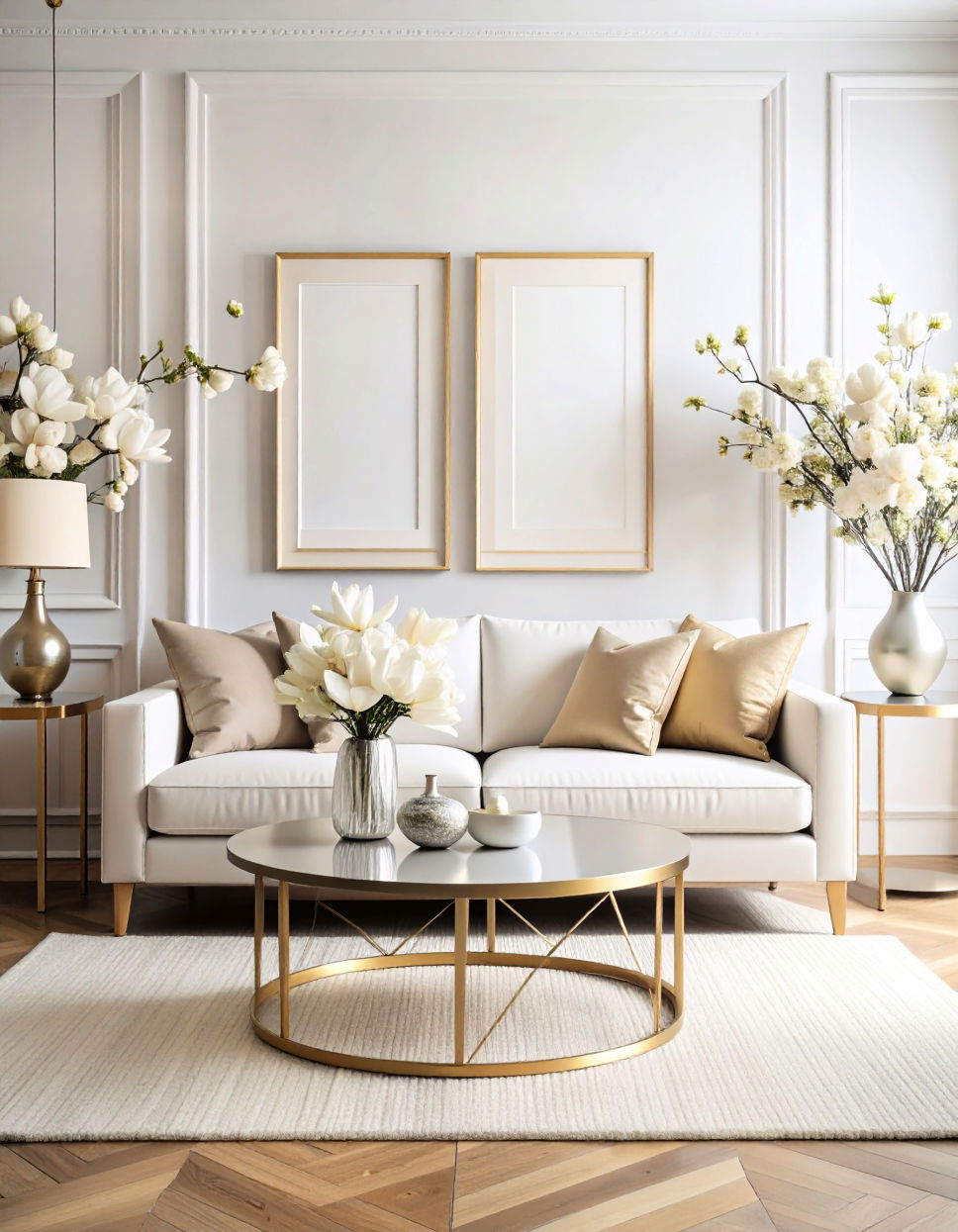
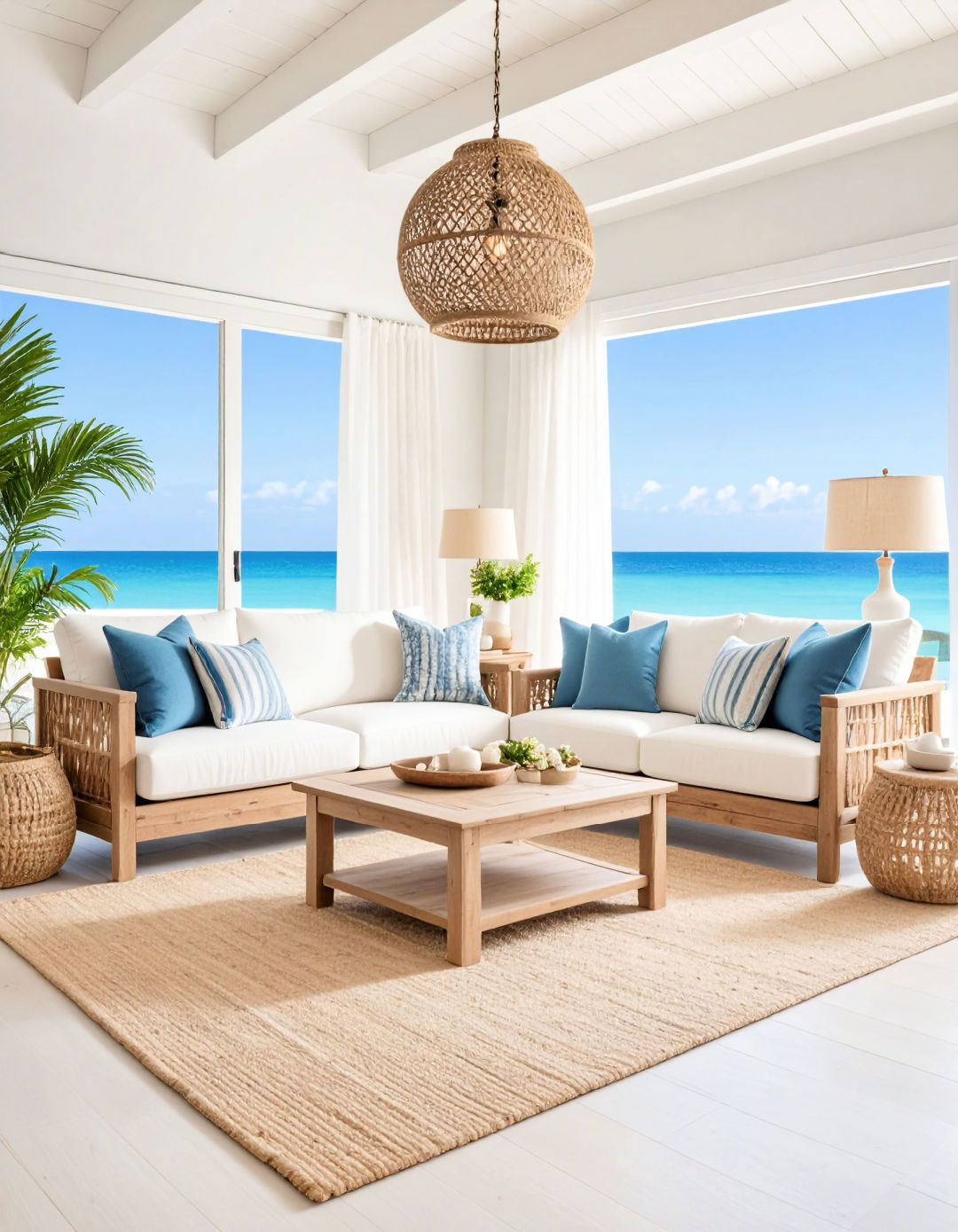

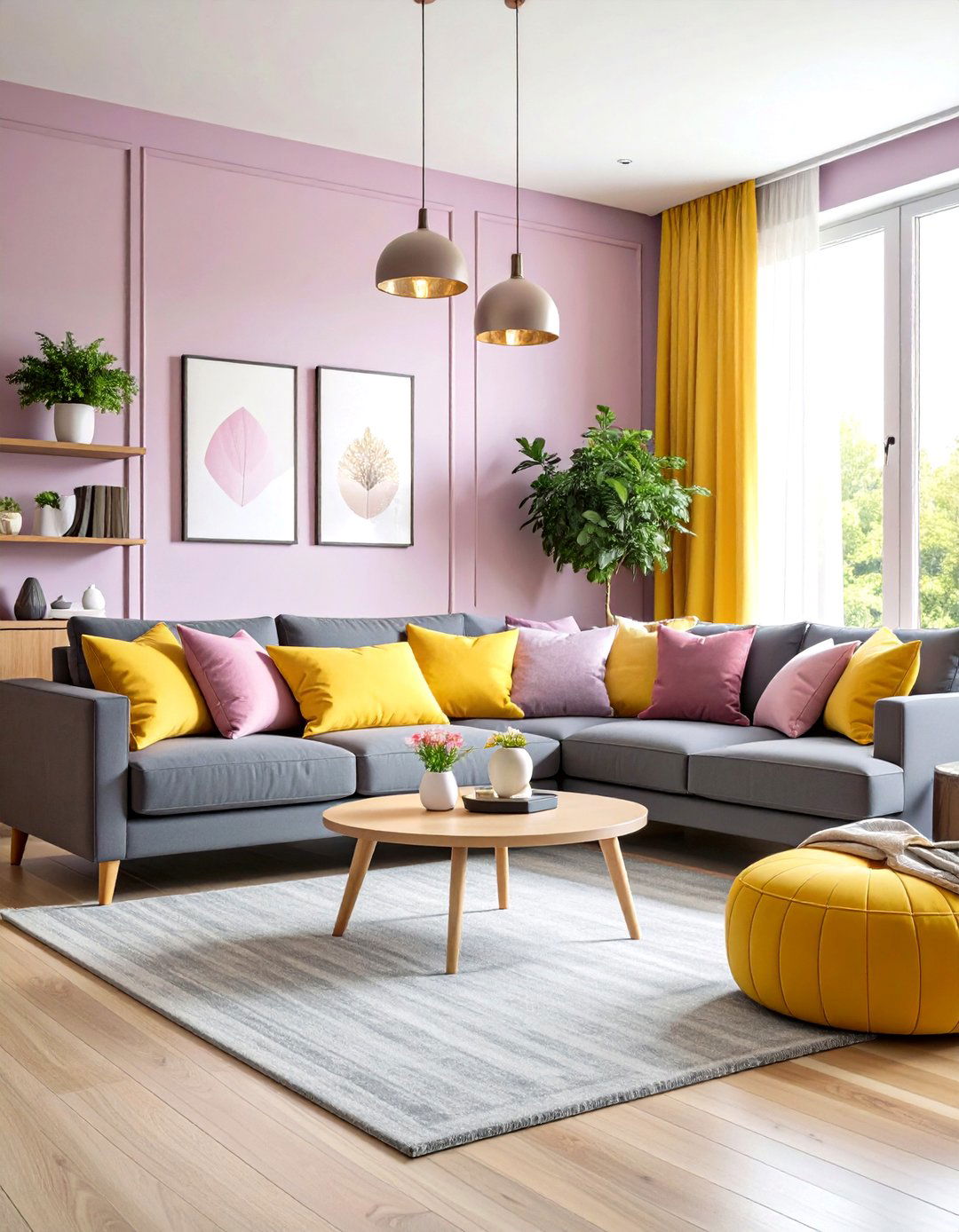
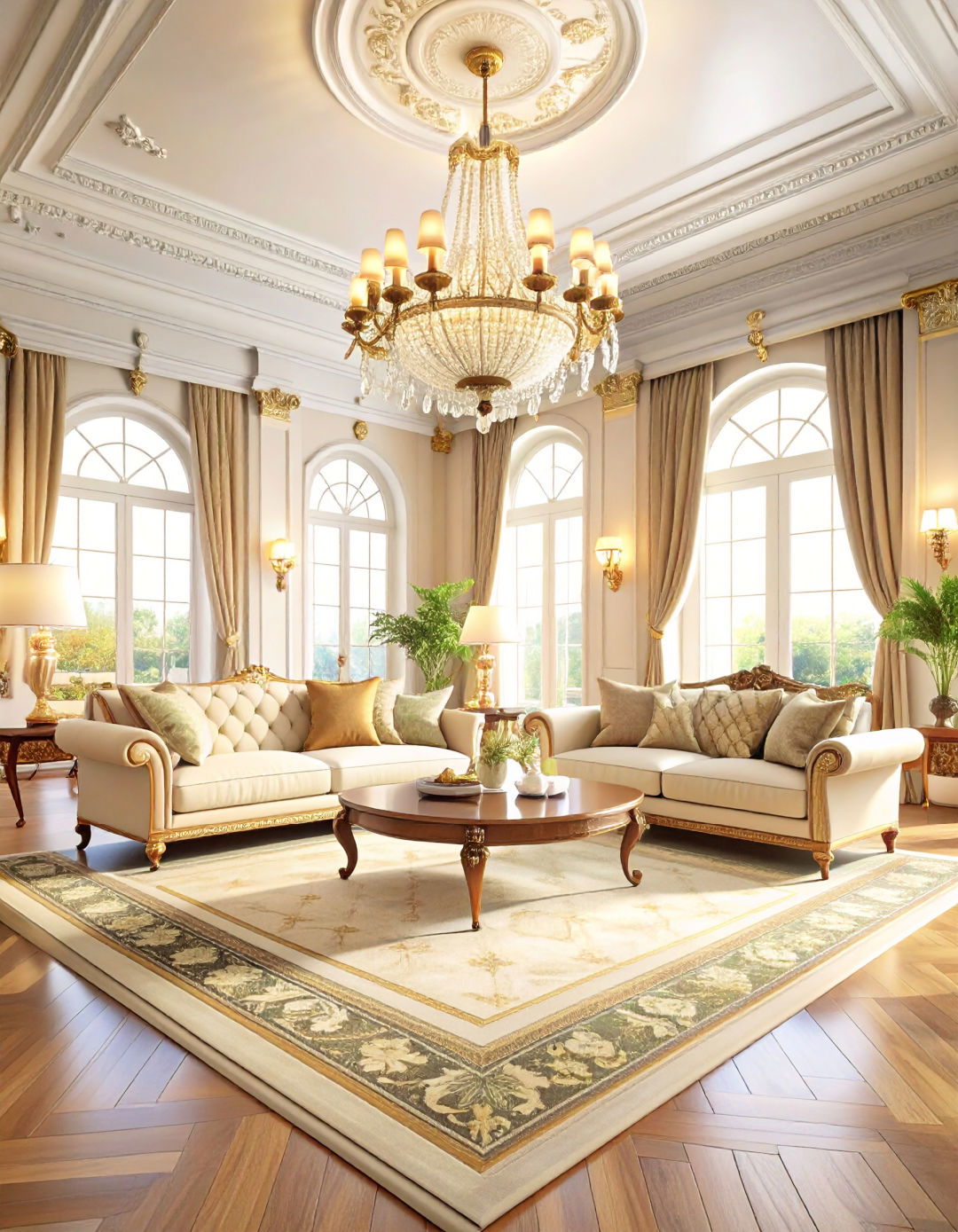
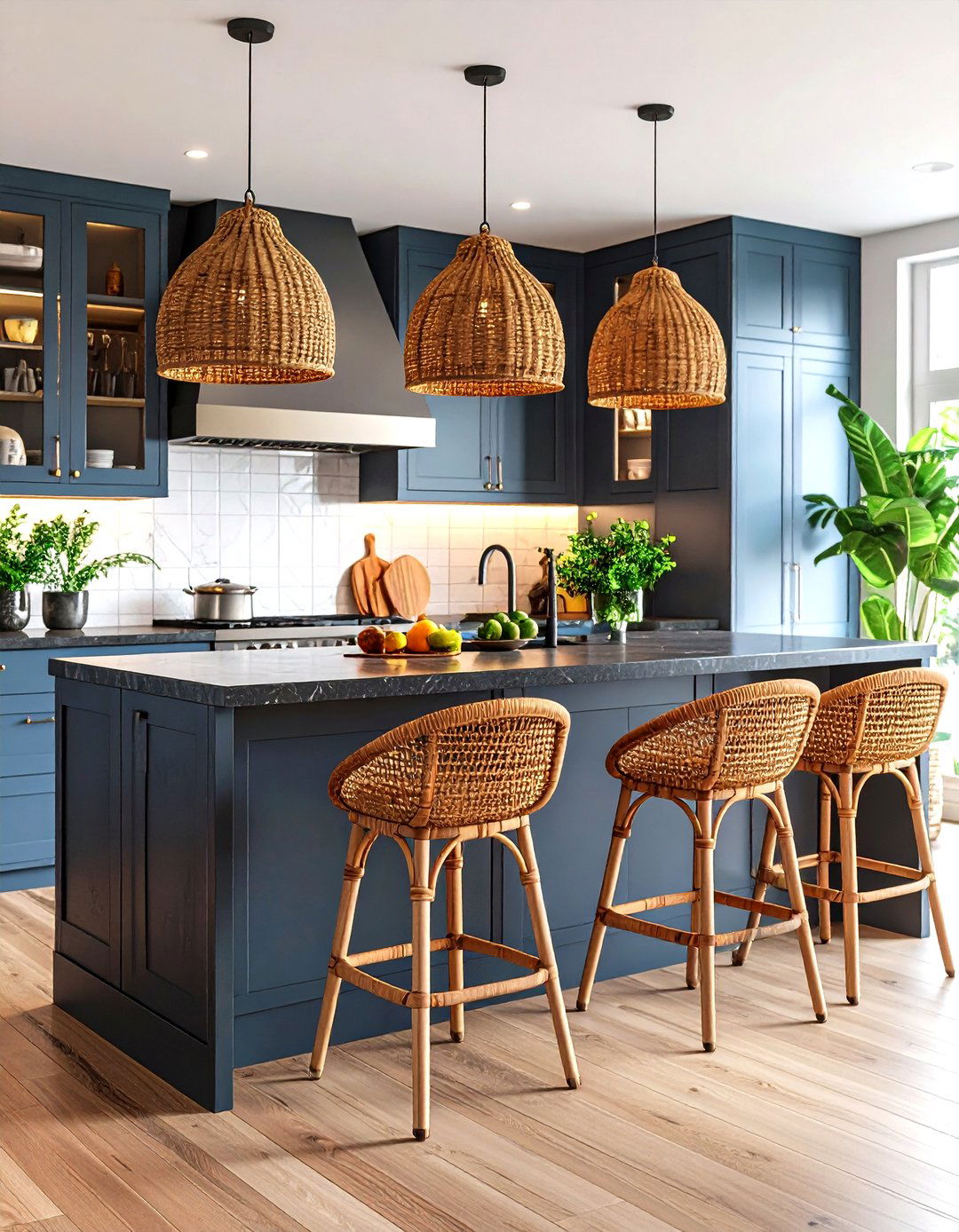
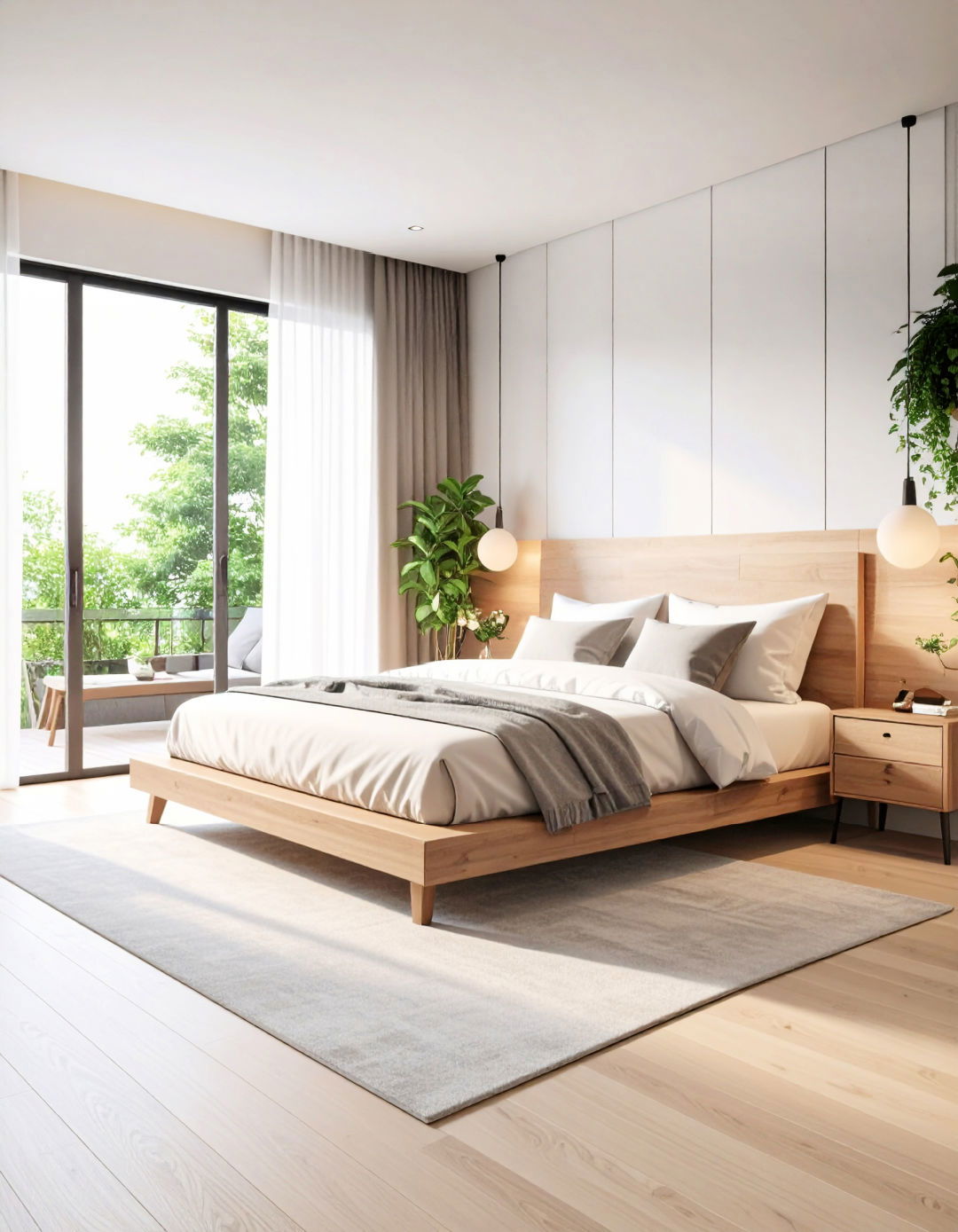
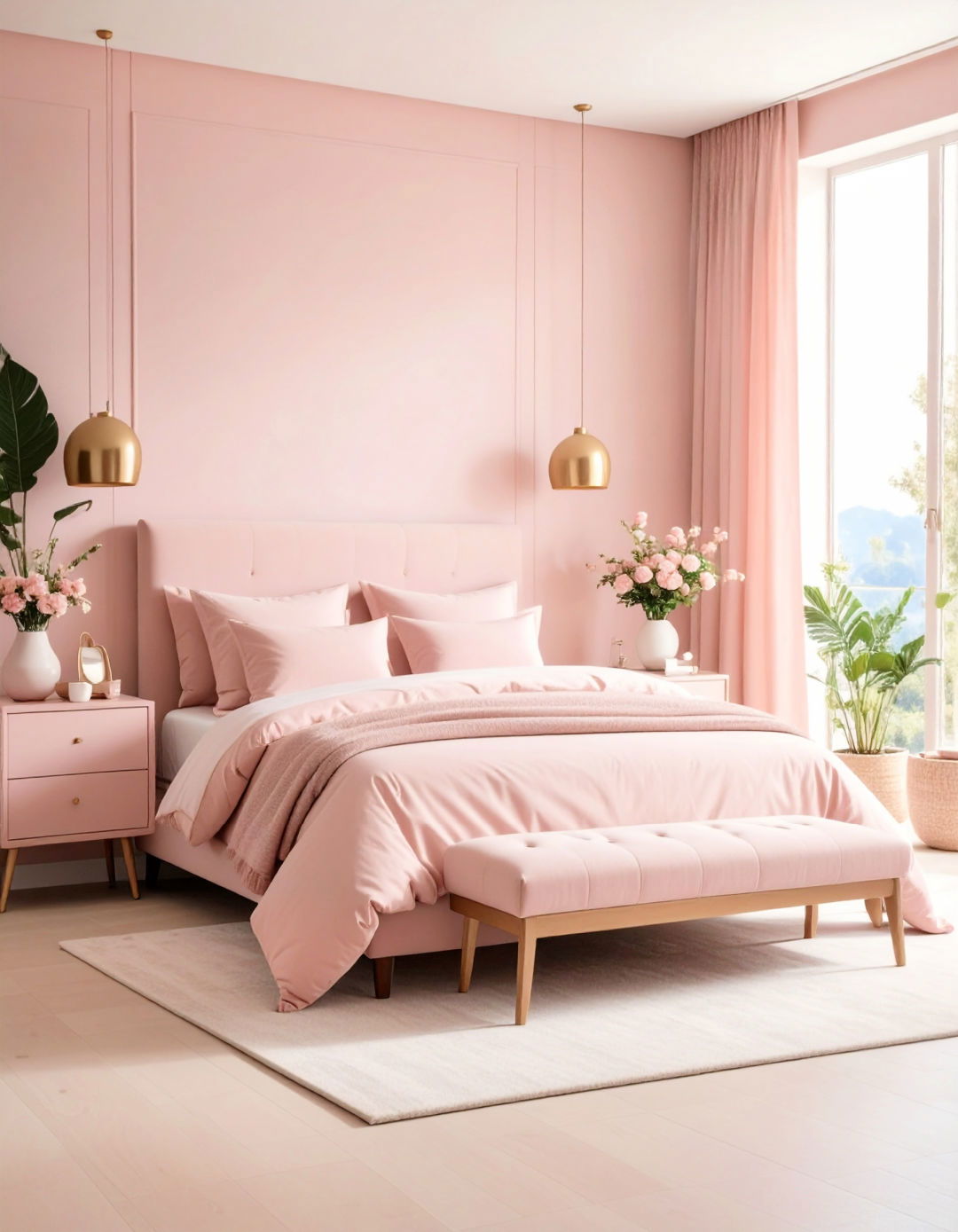
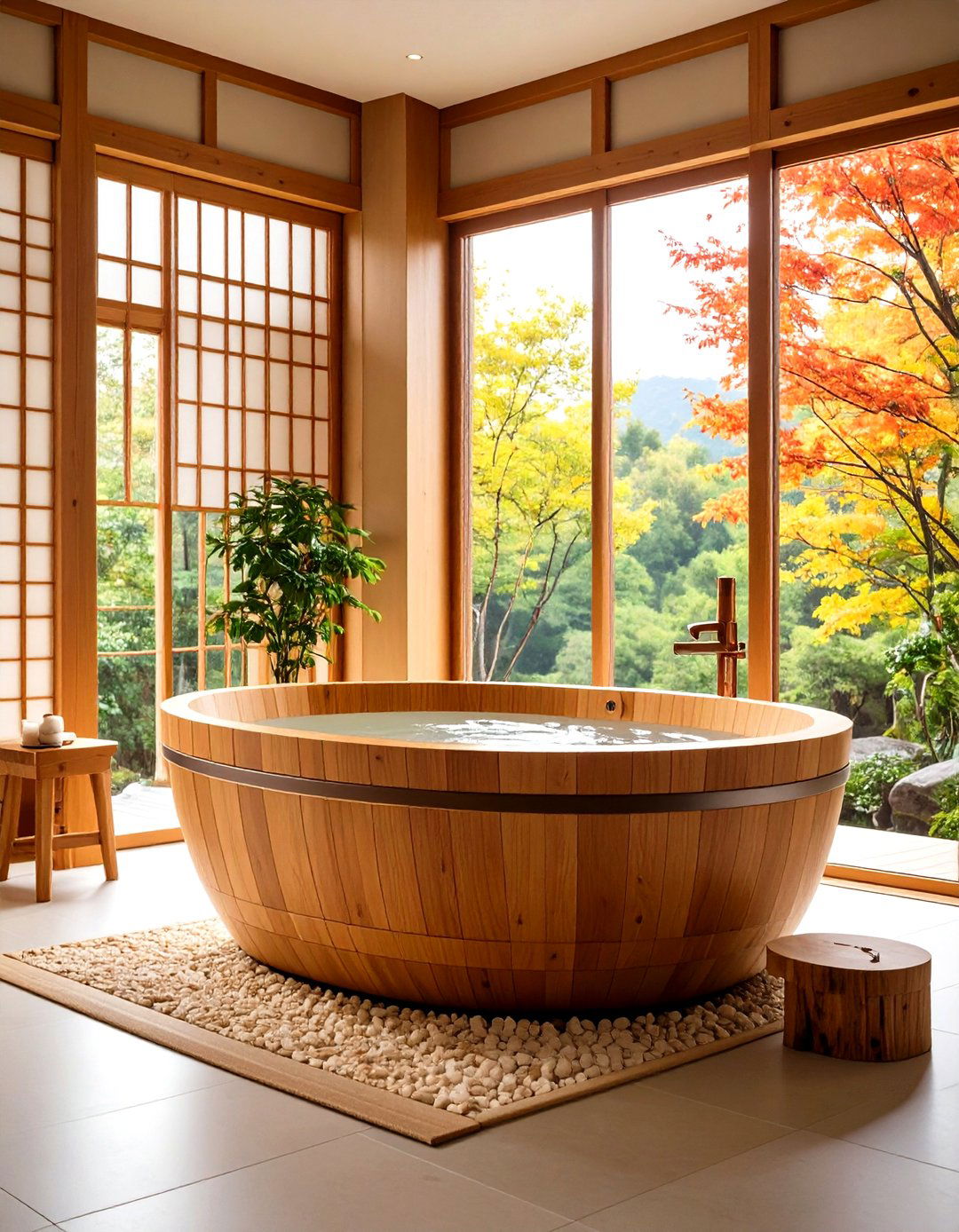
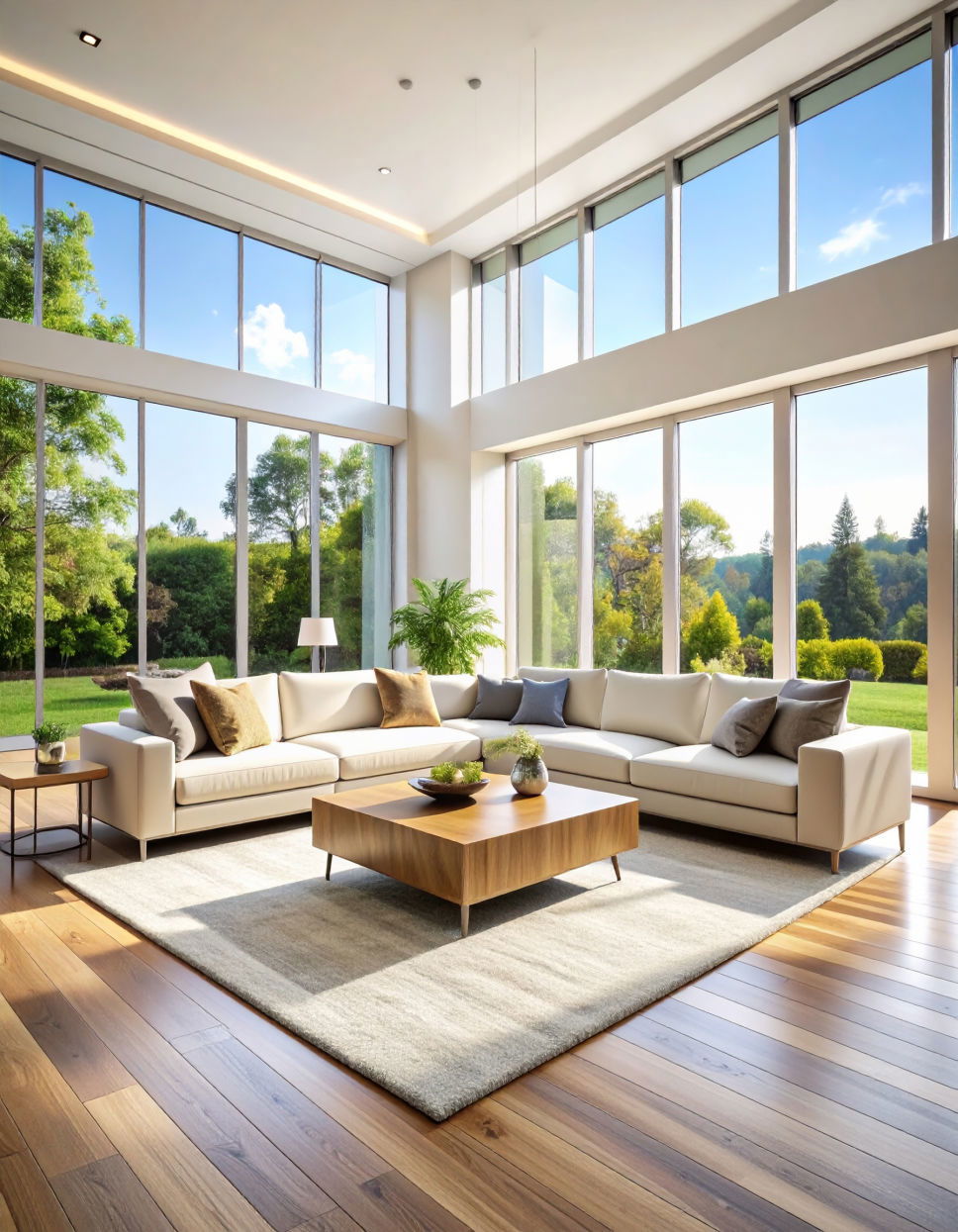
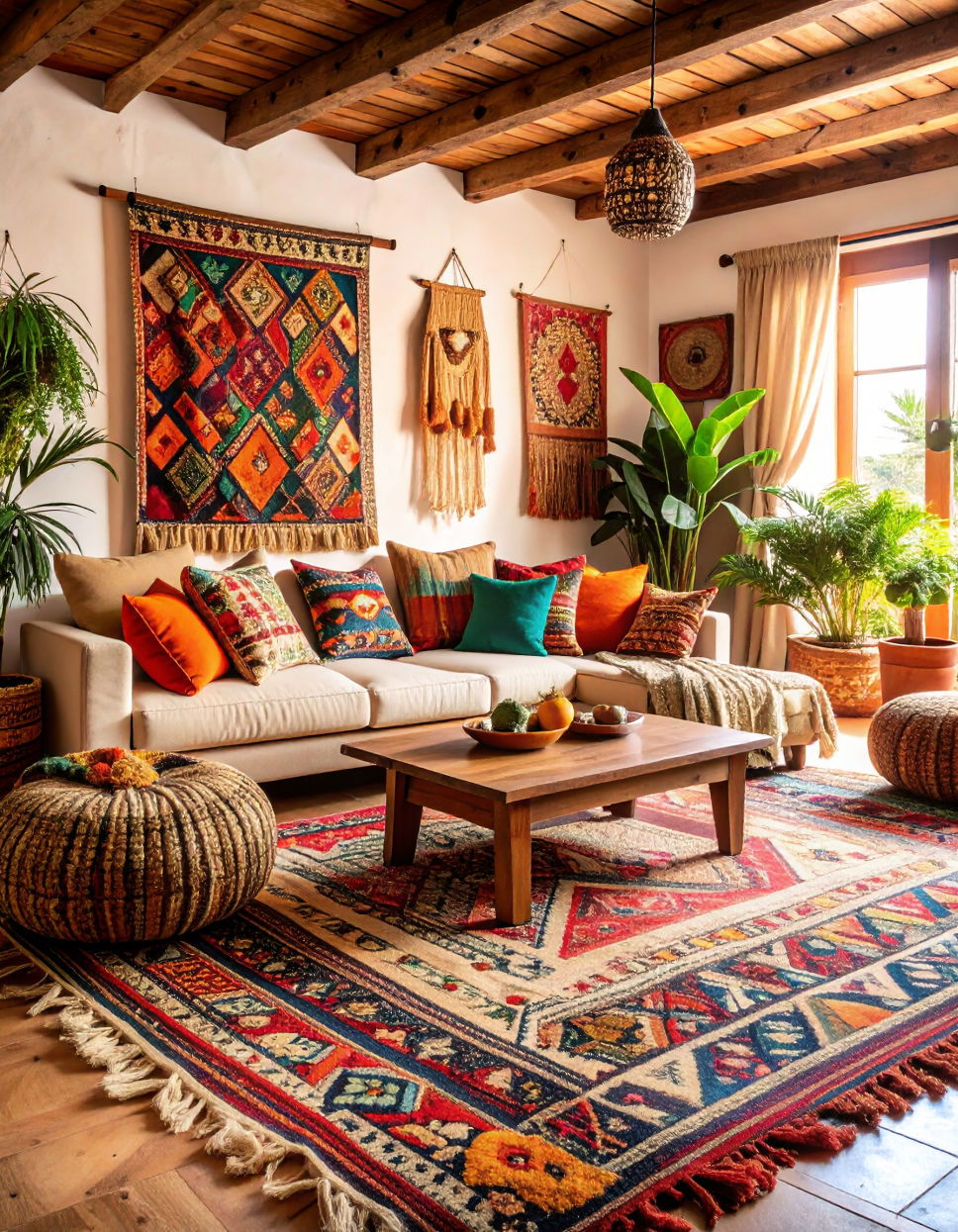


Leave a Reply